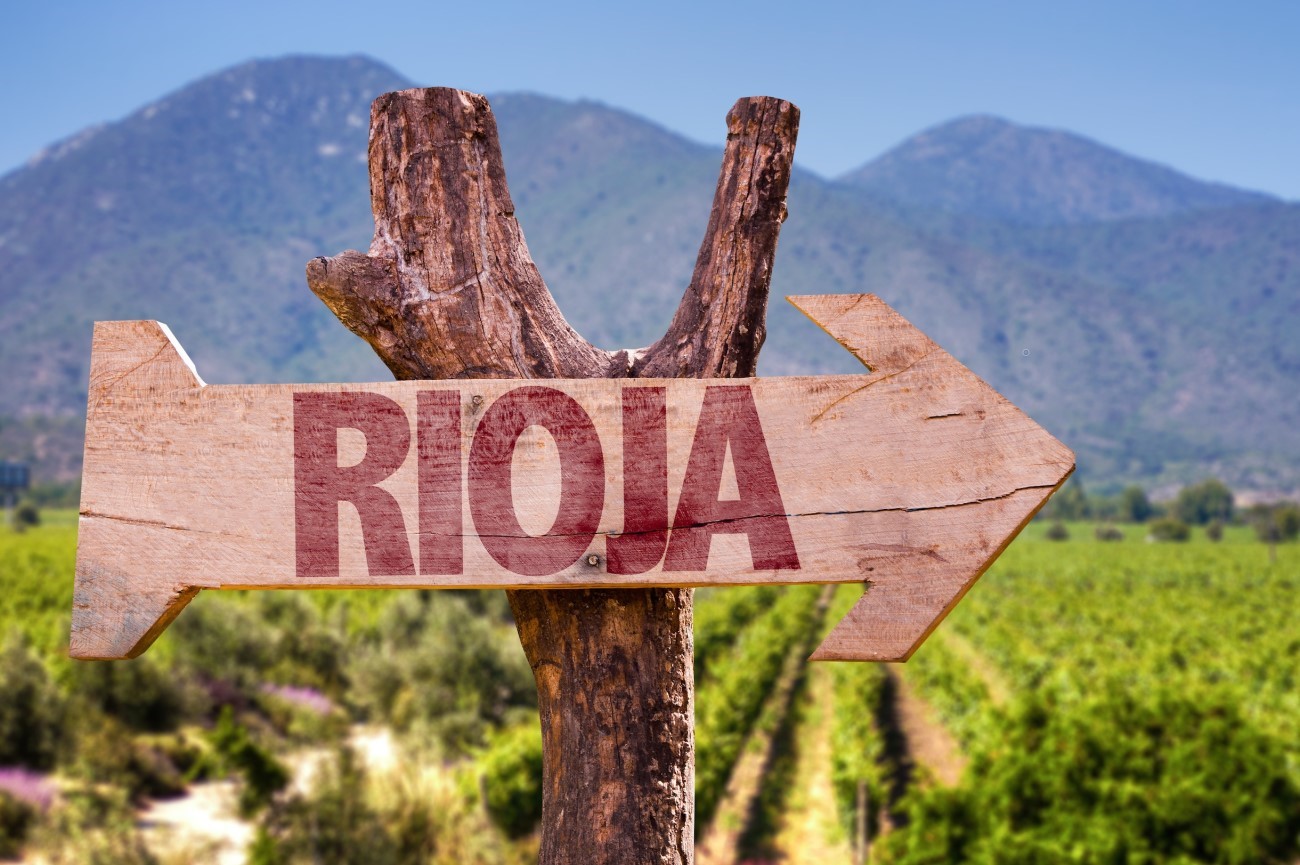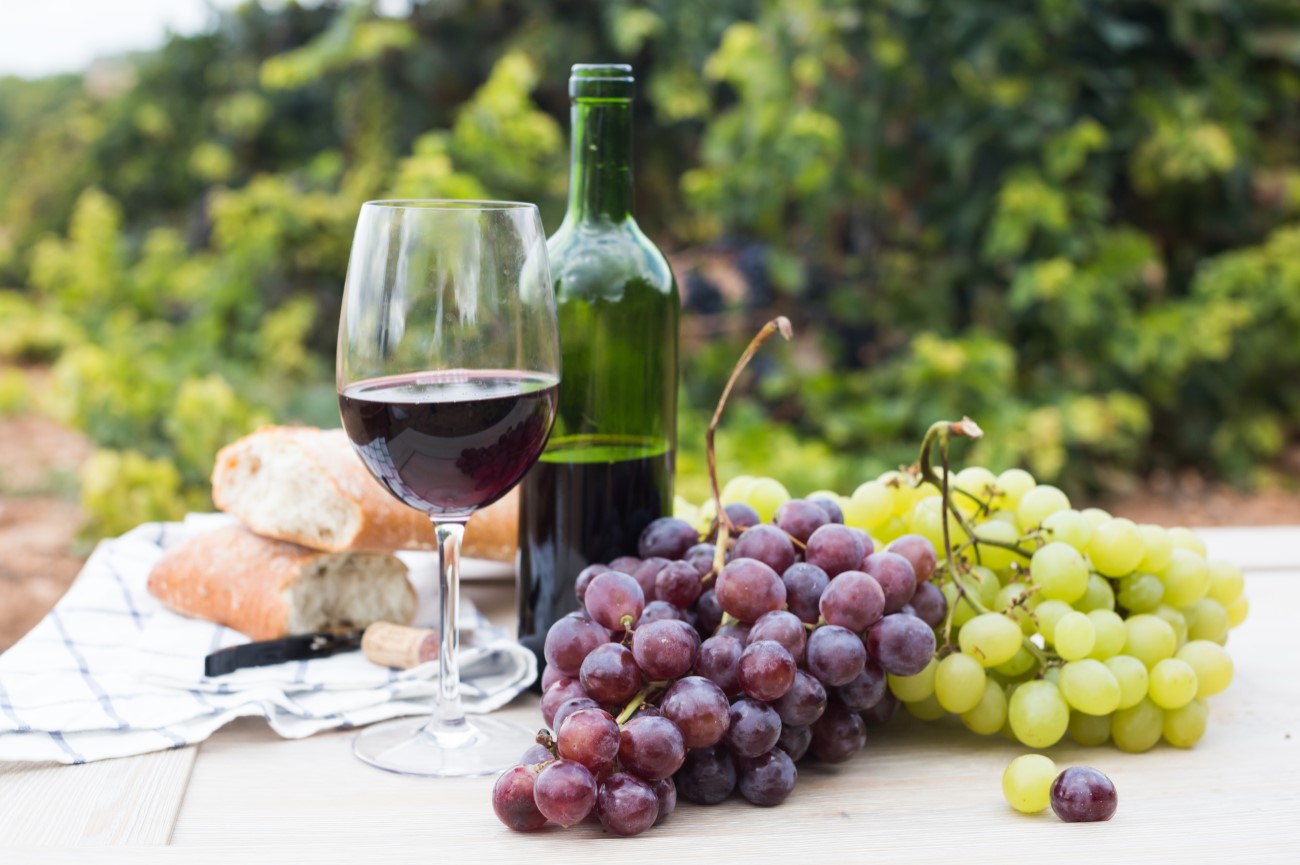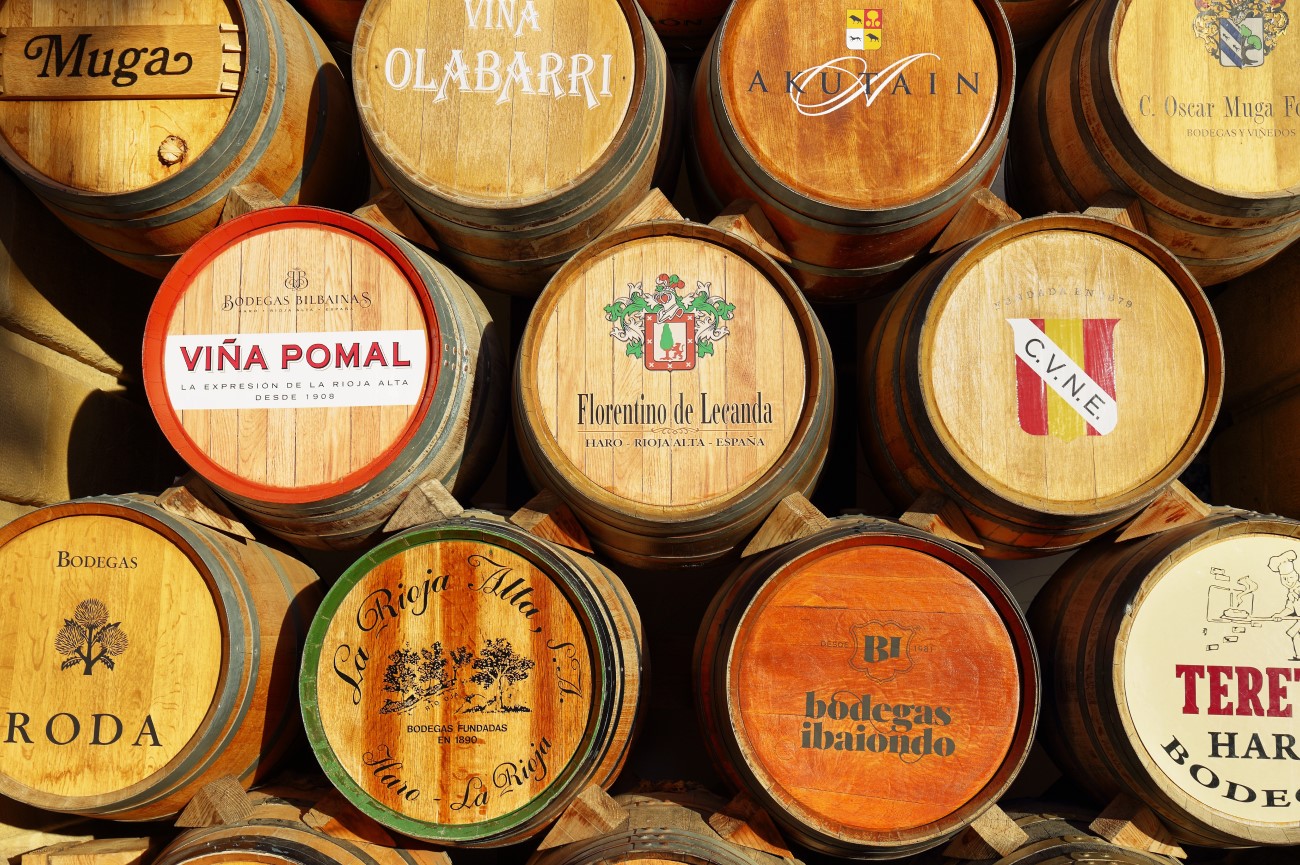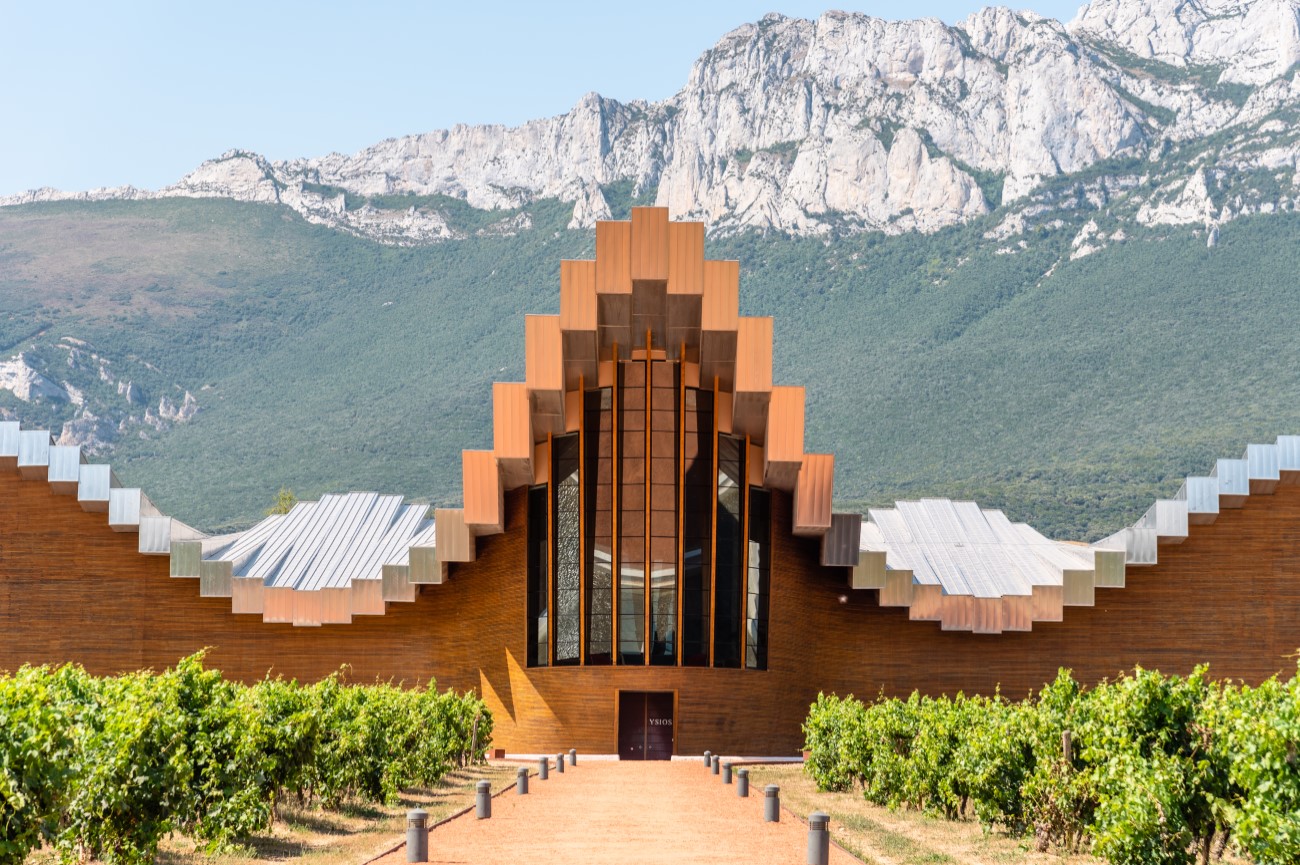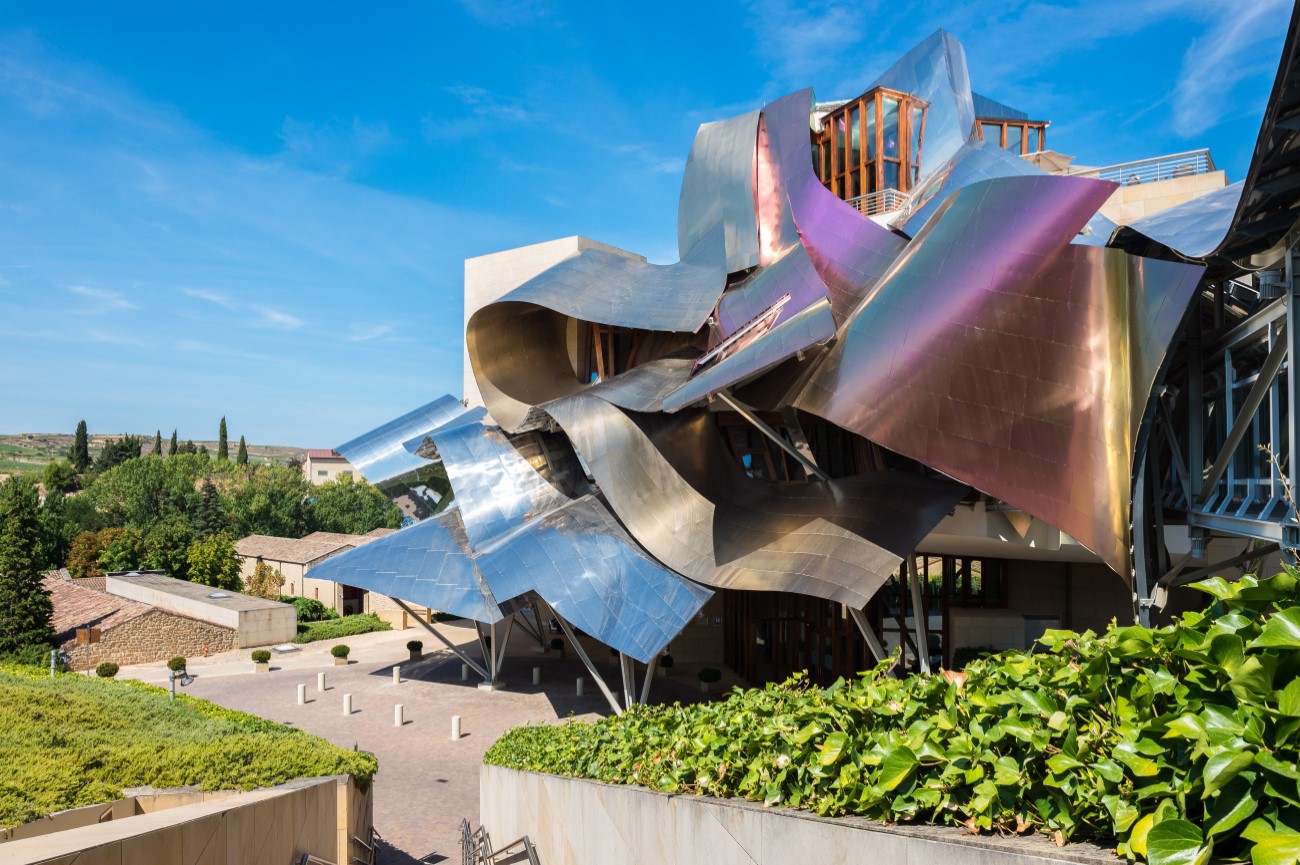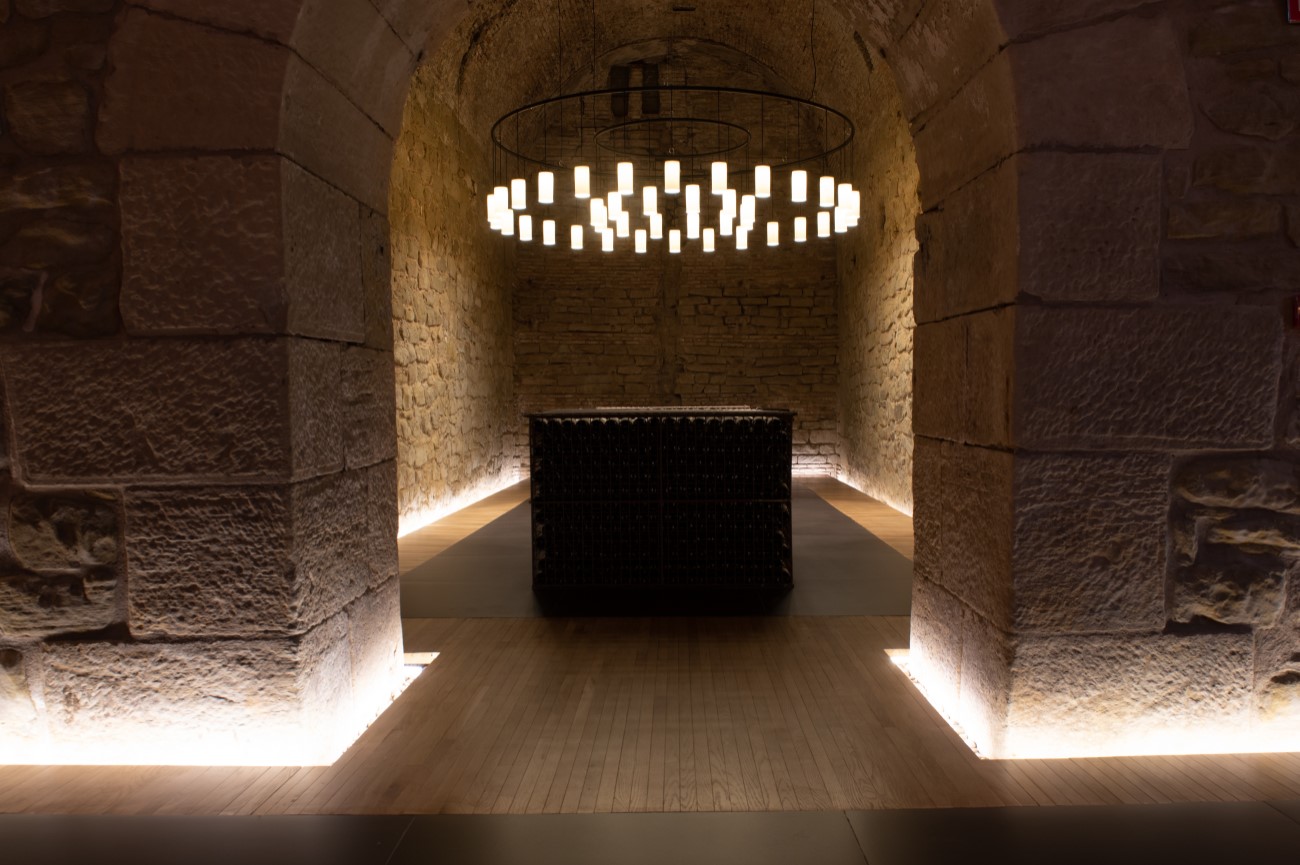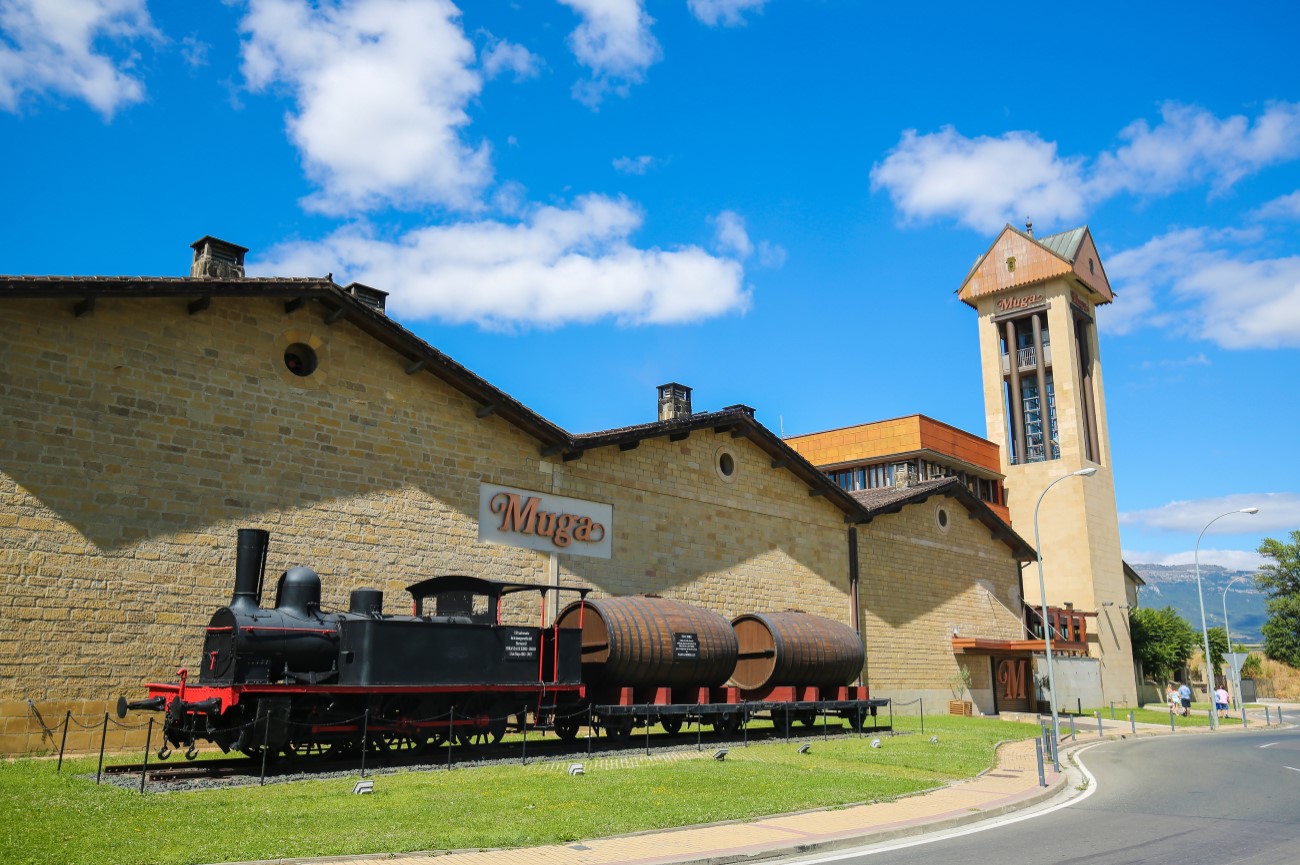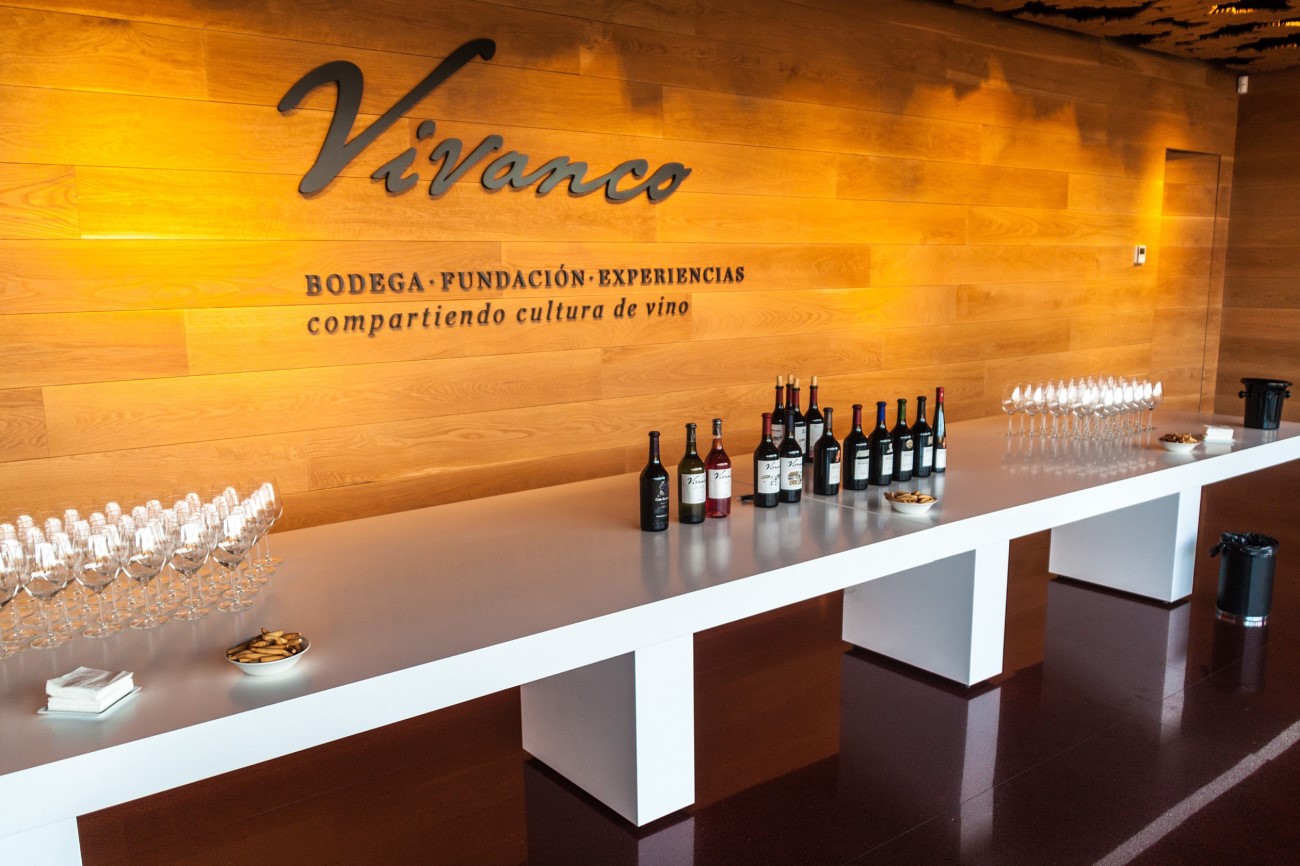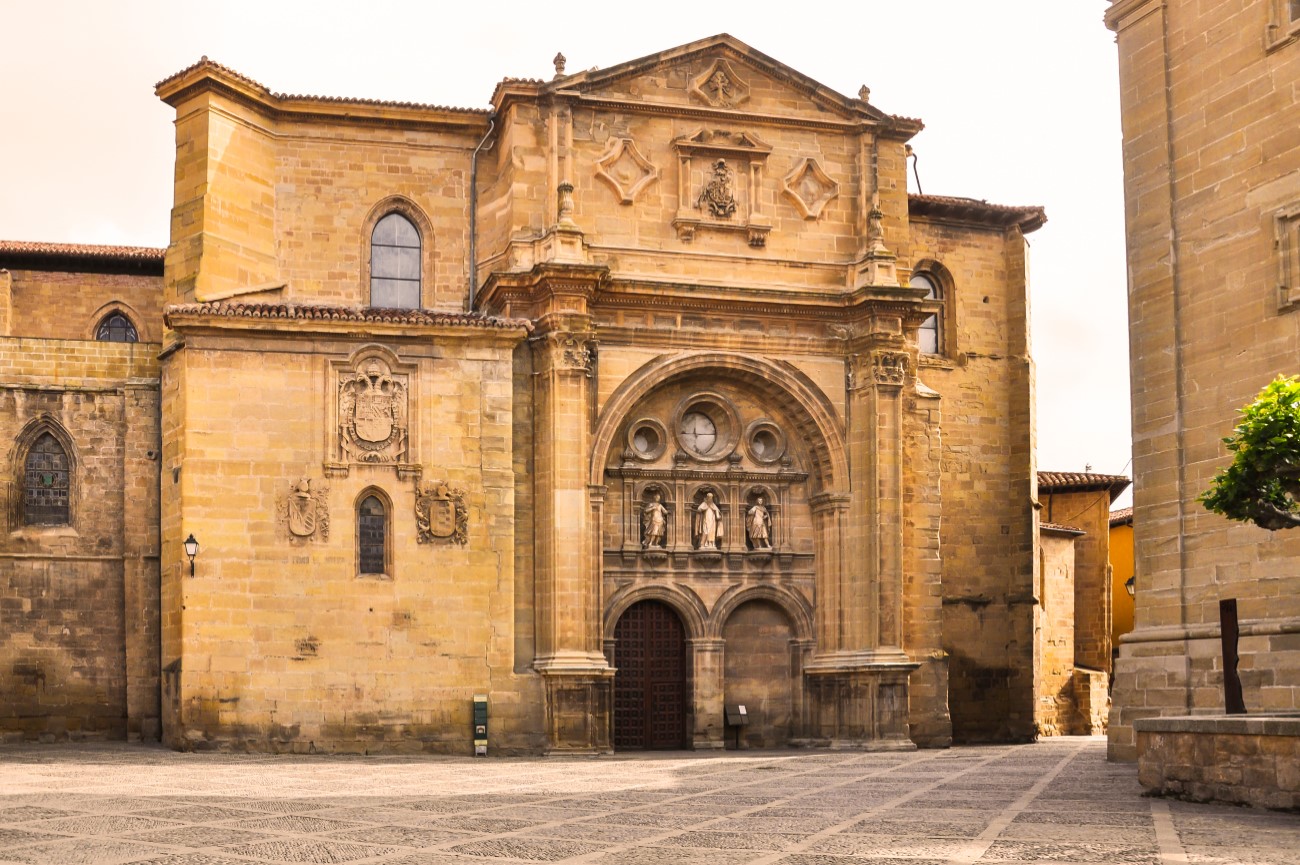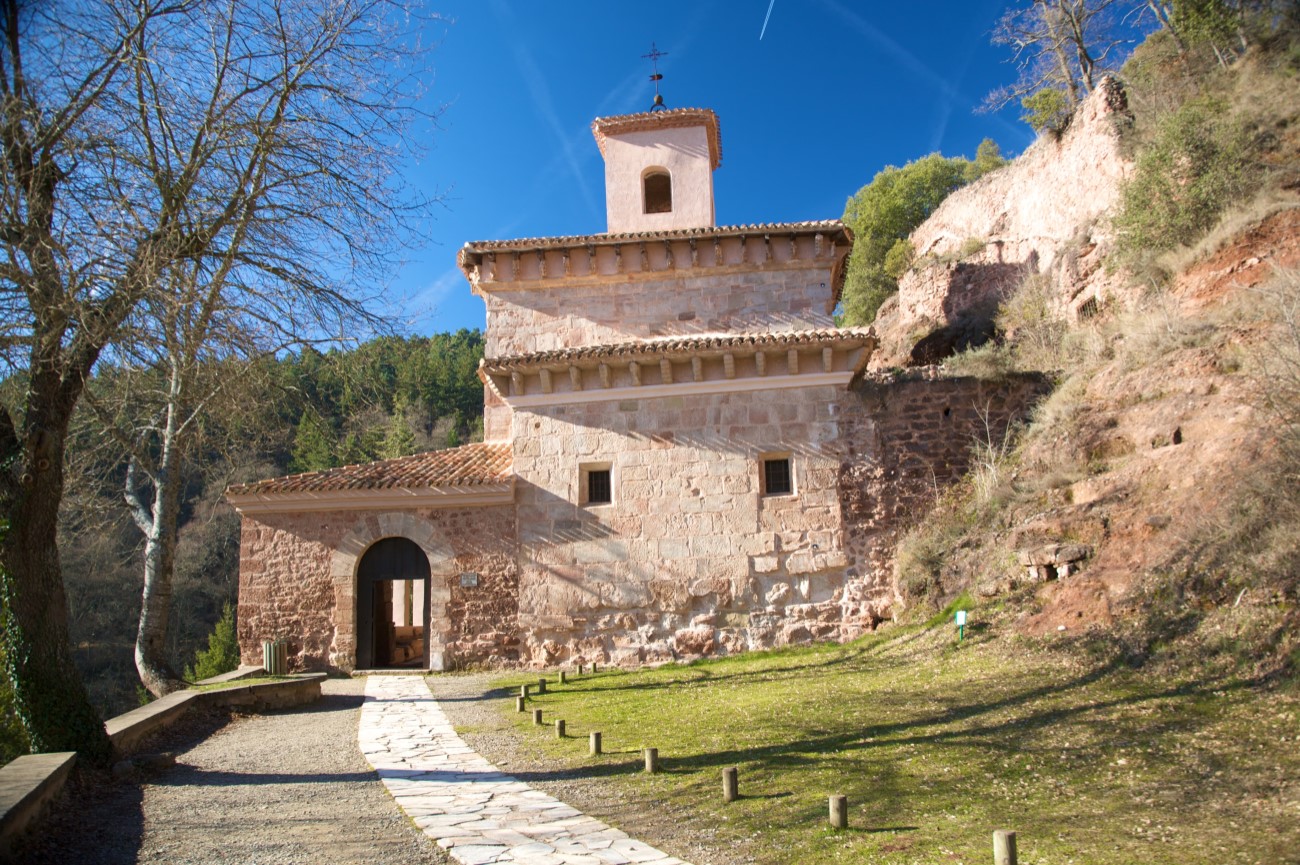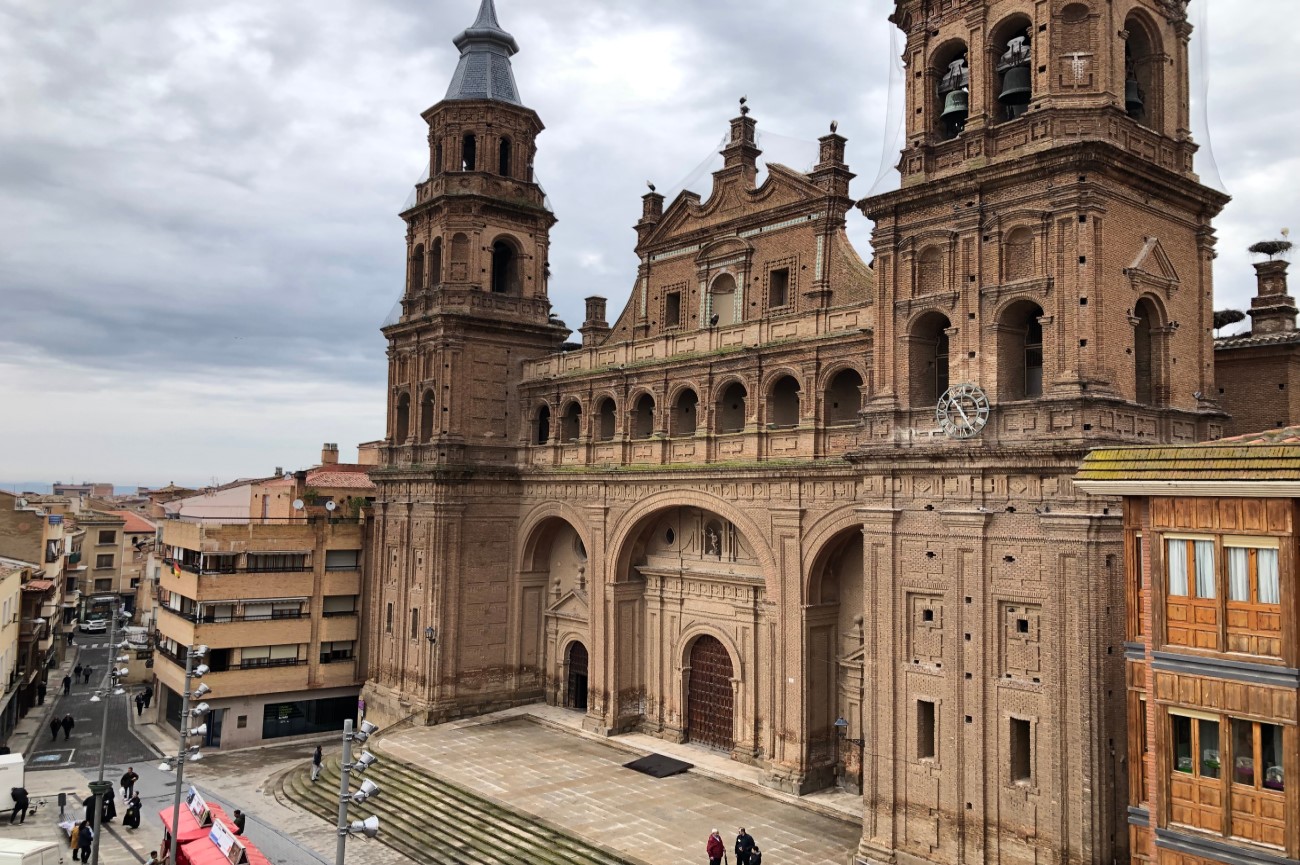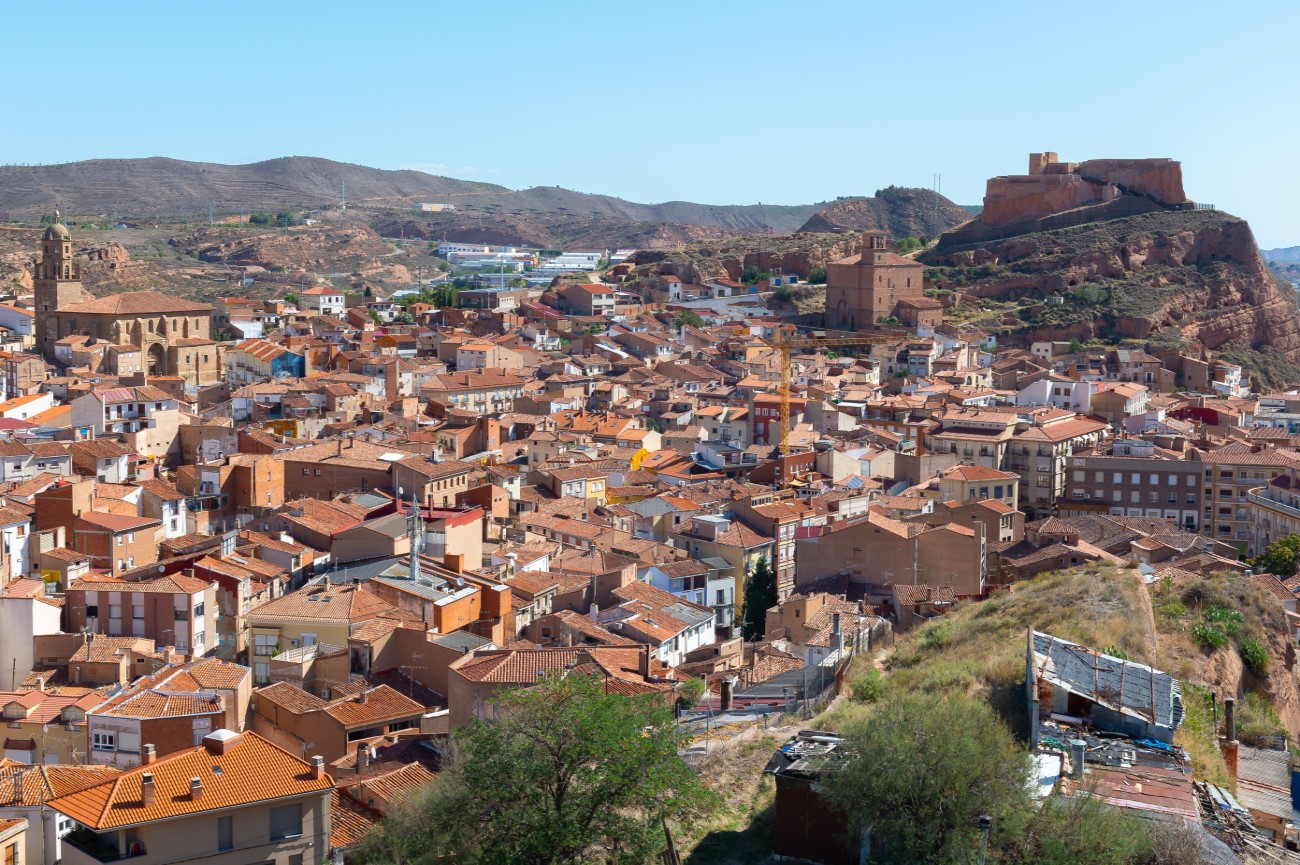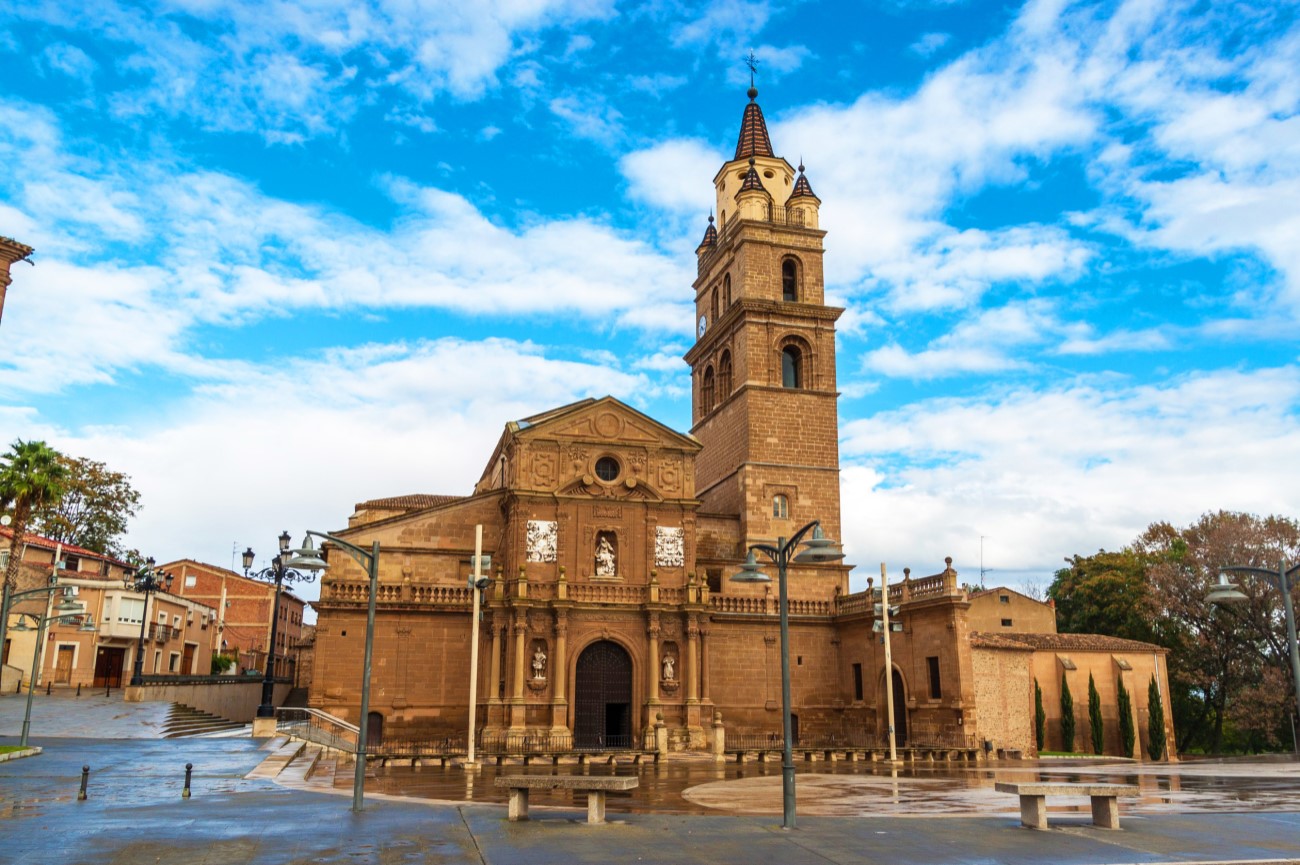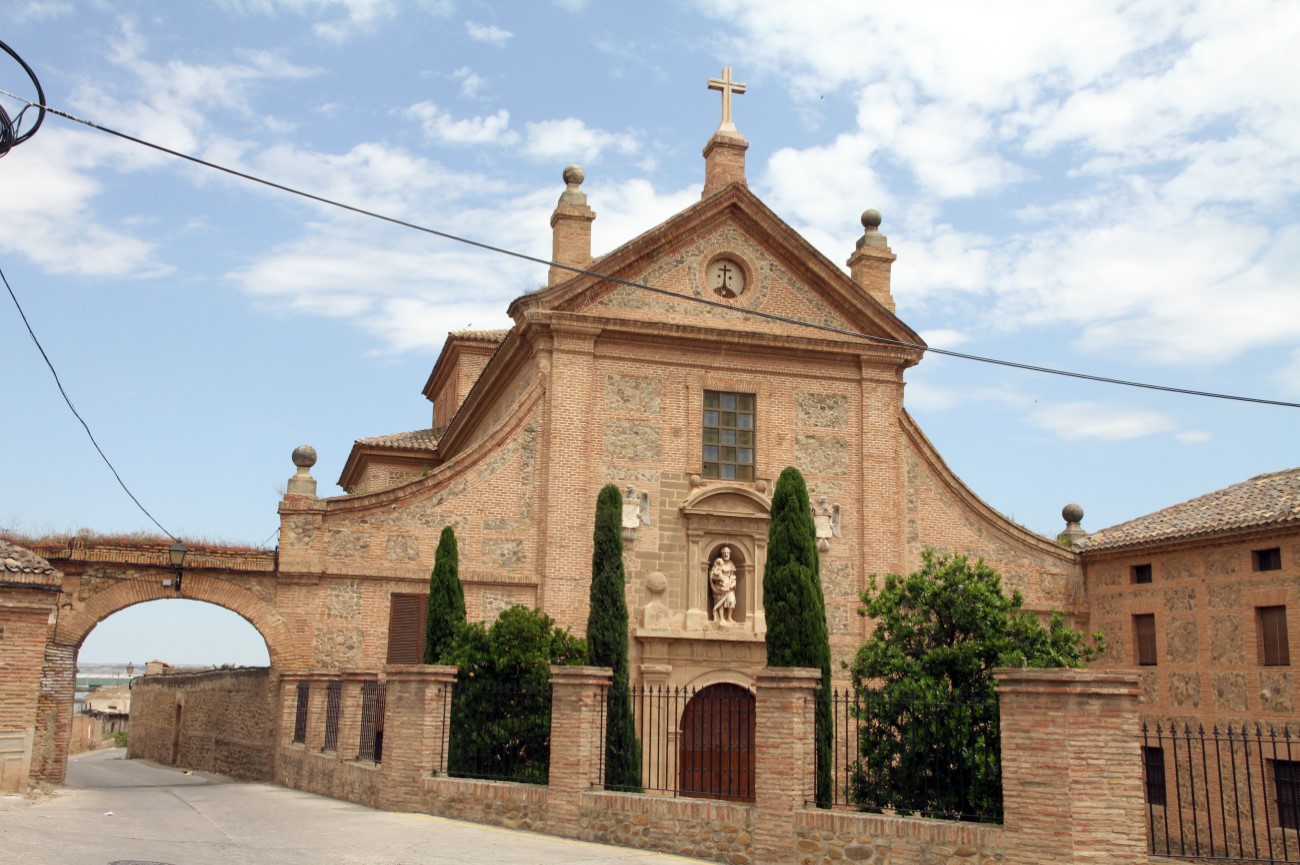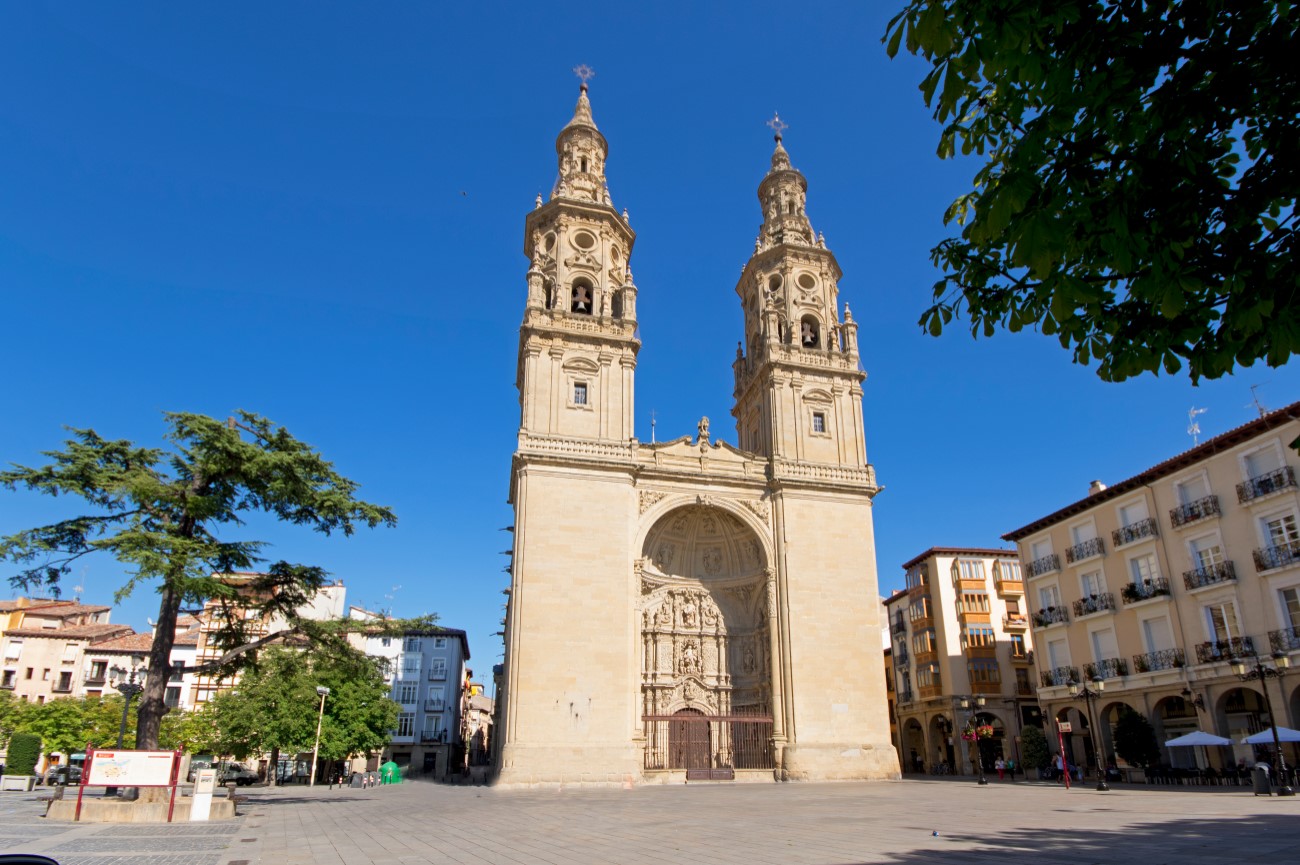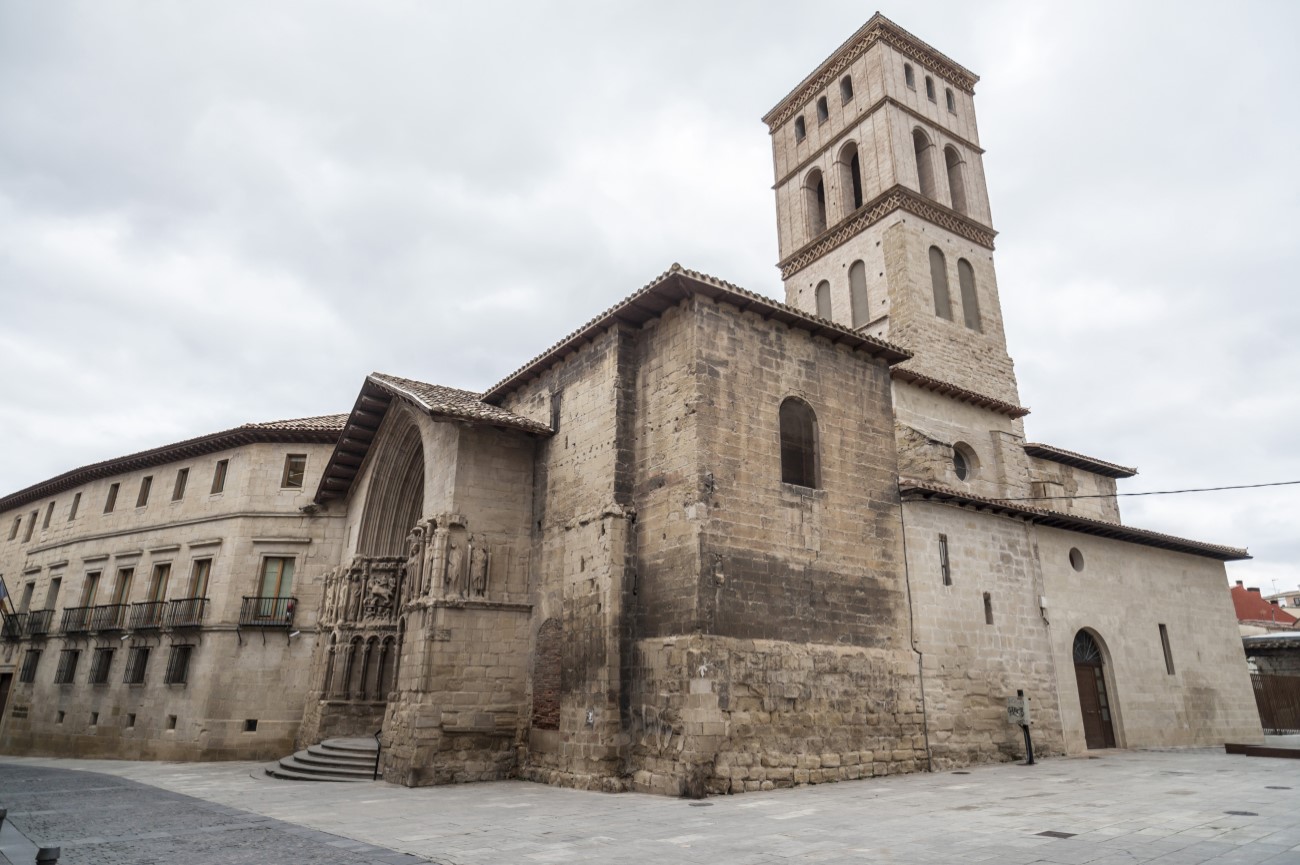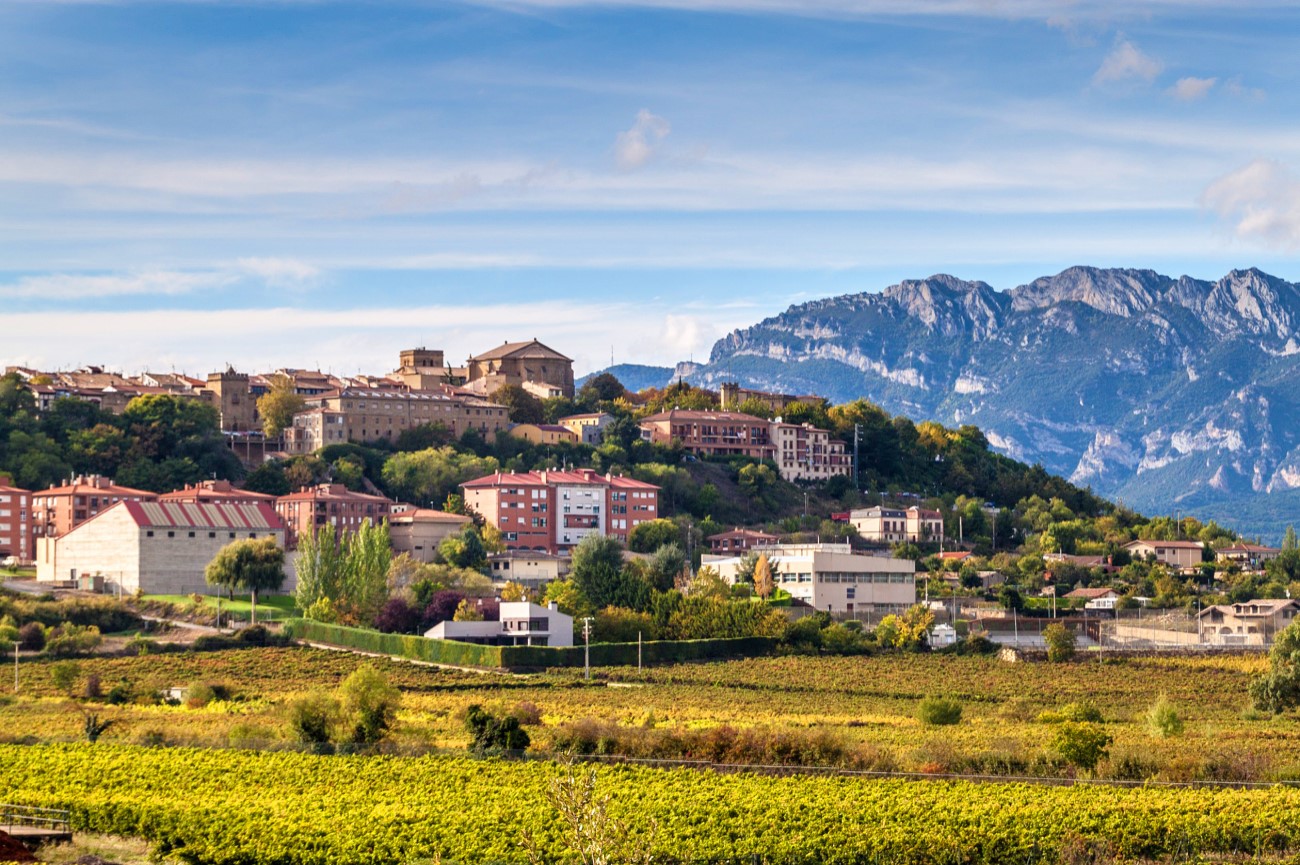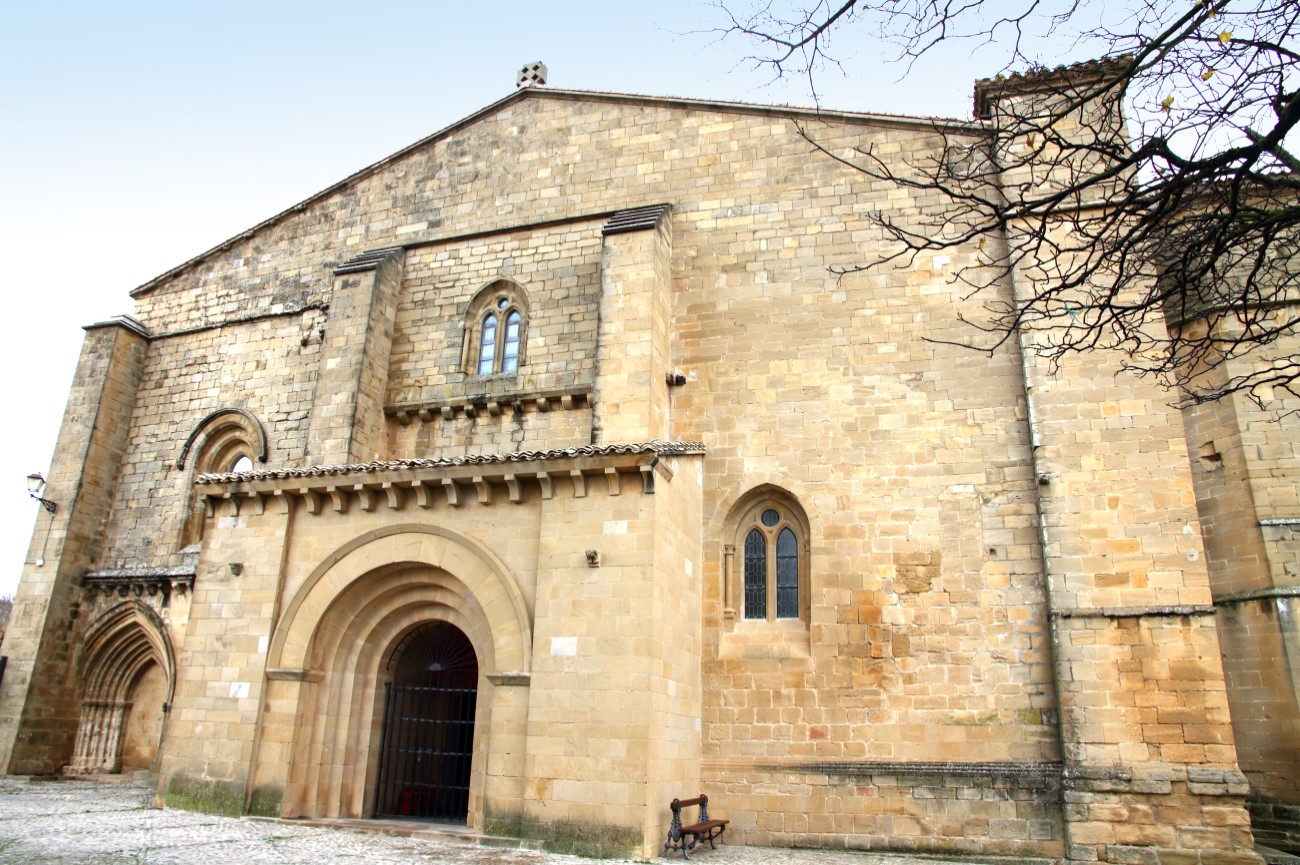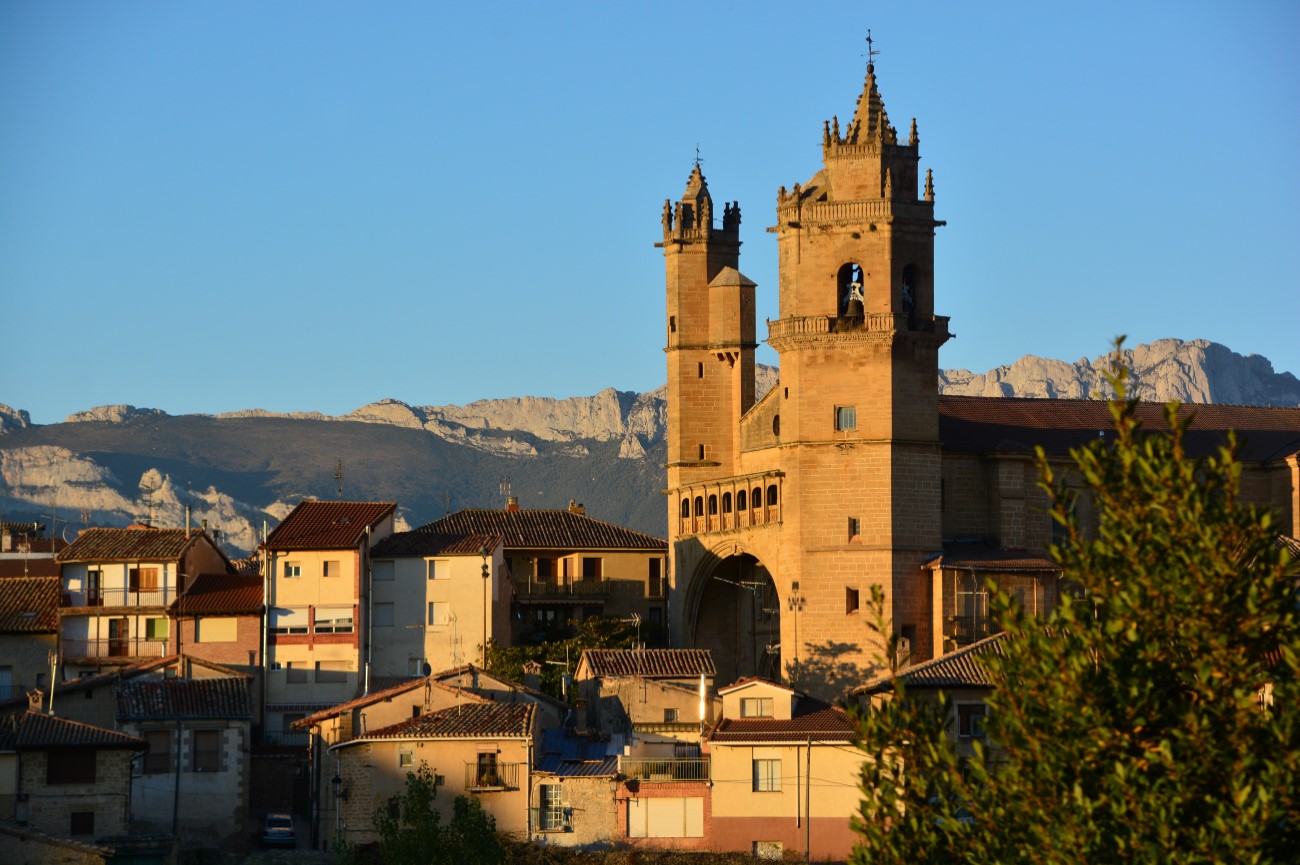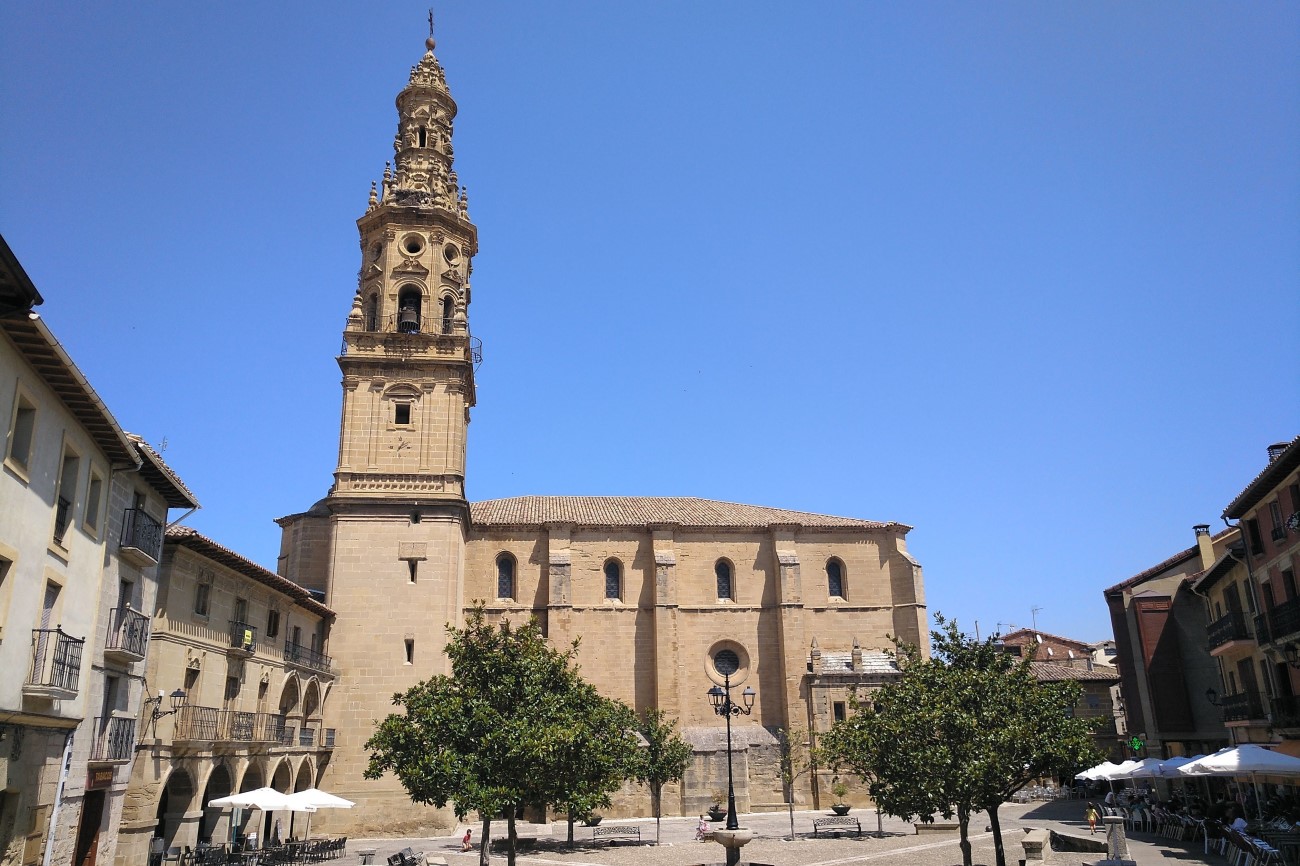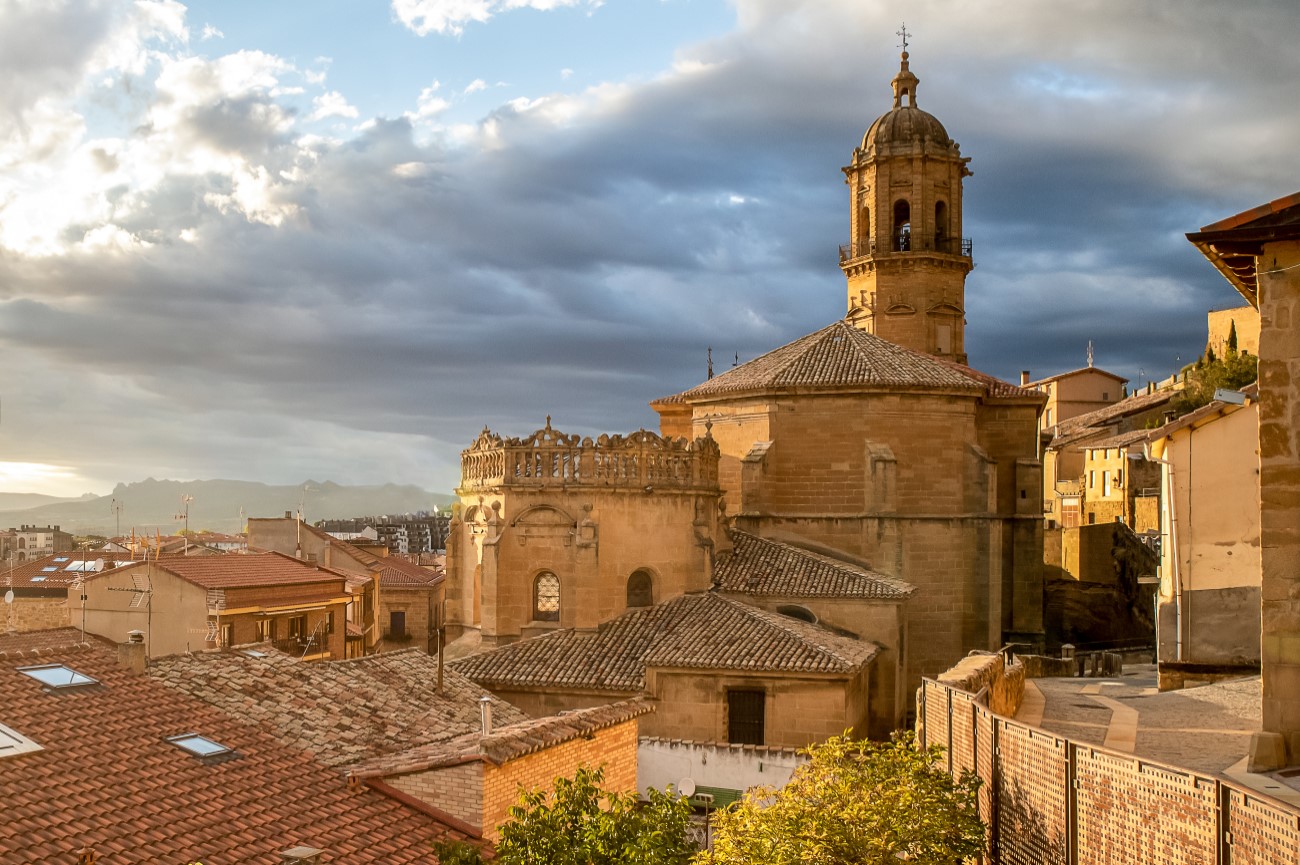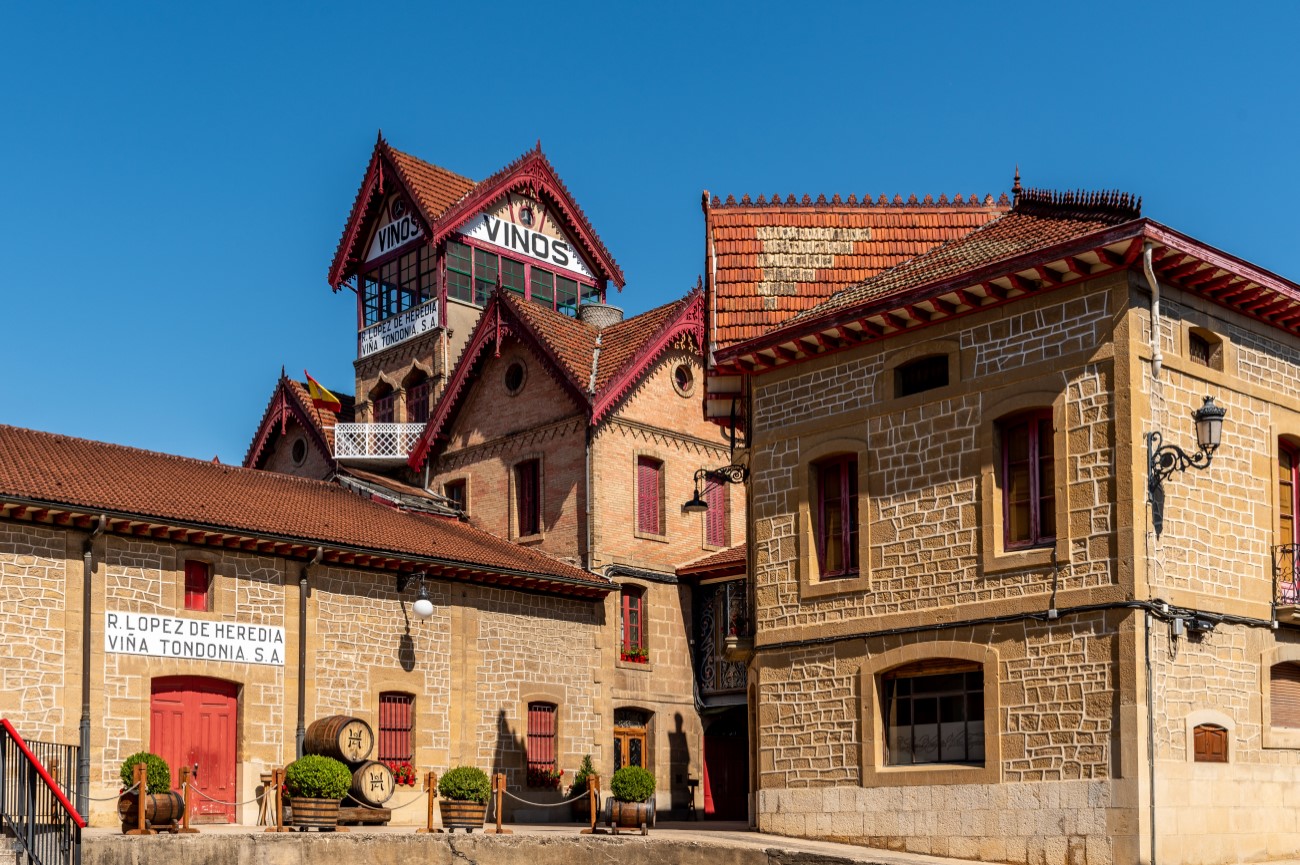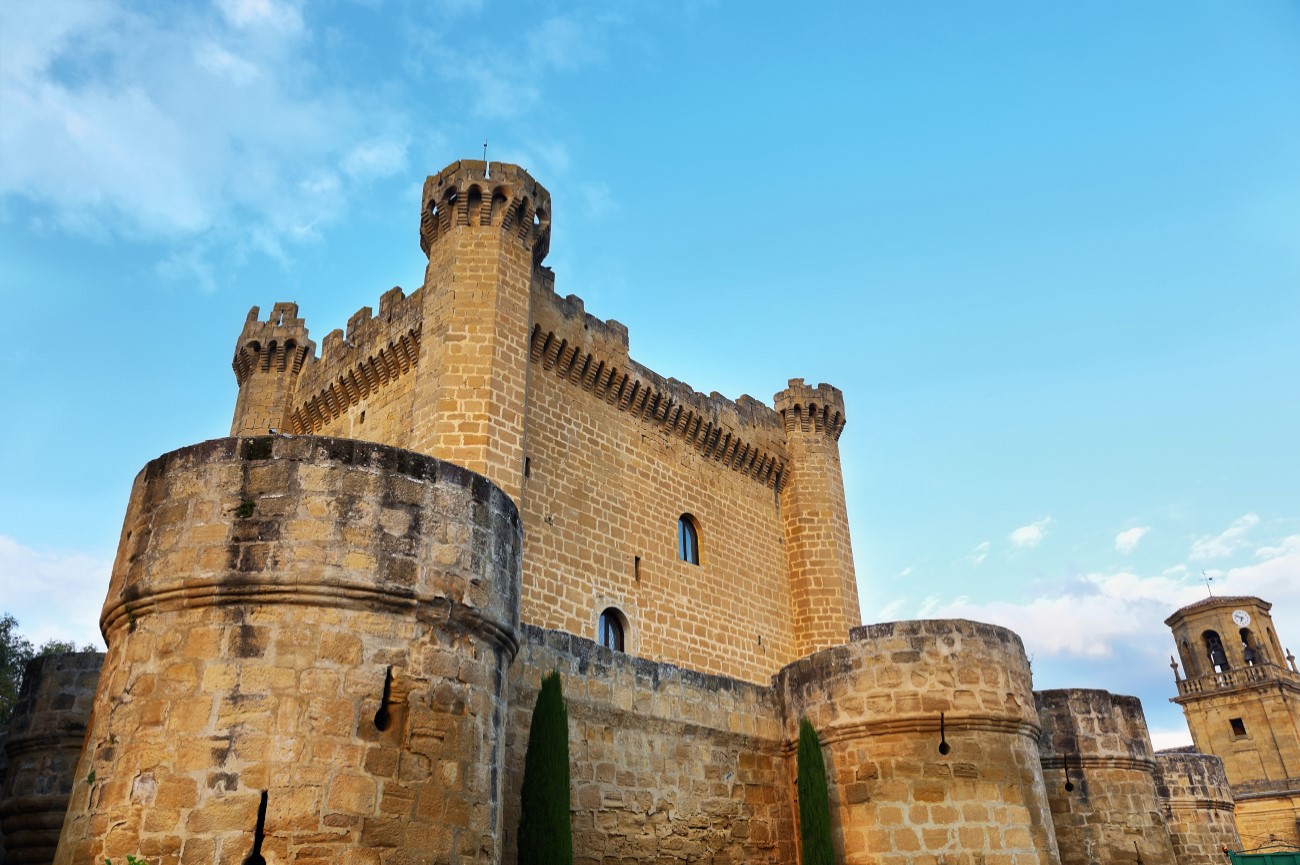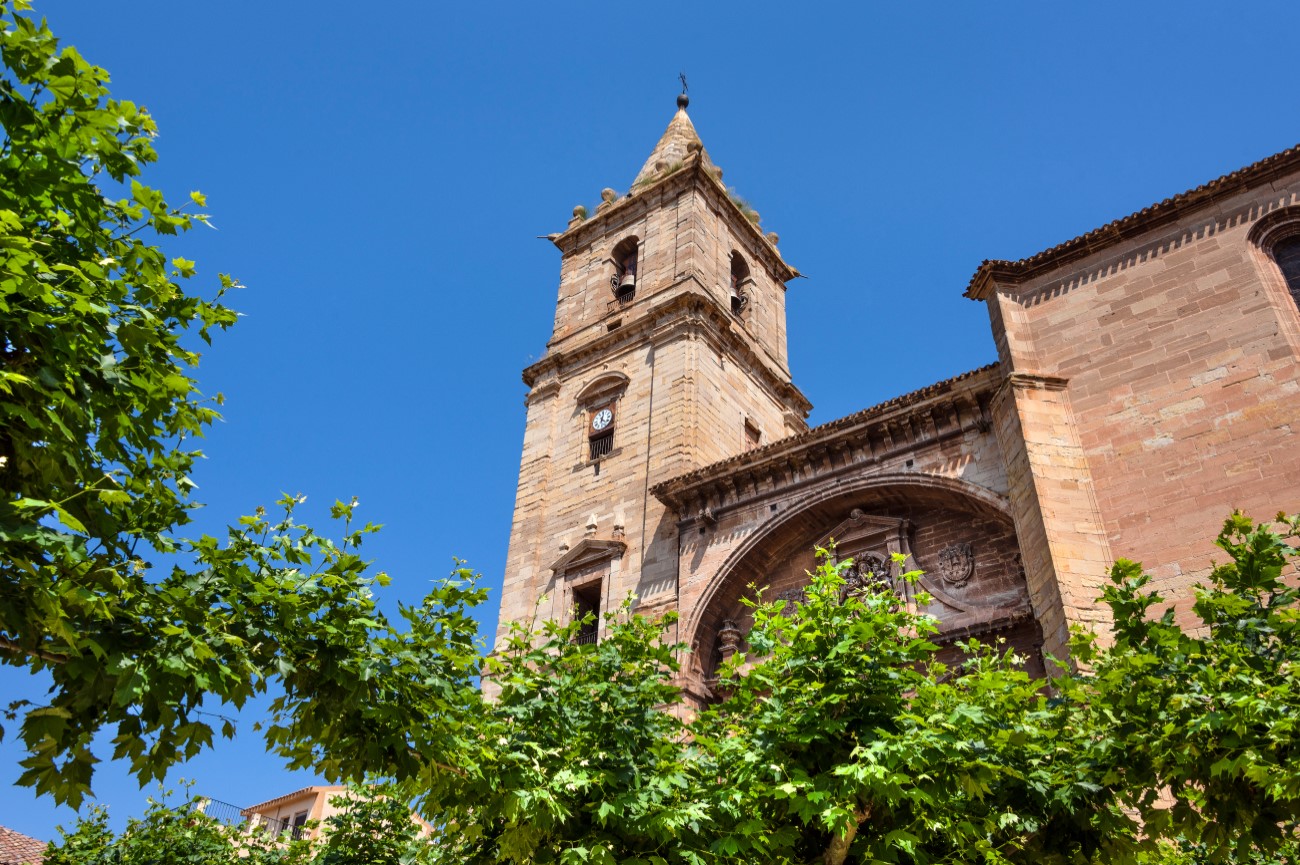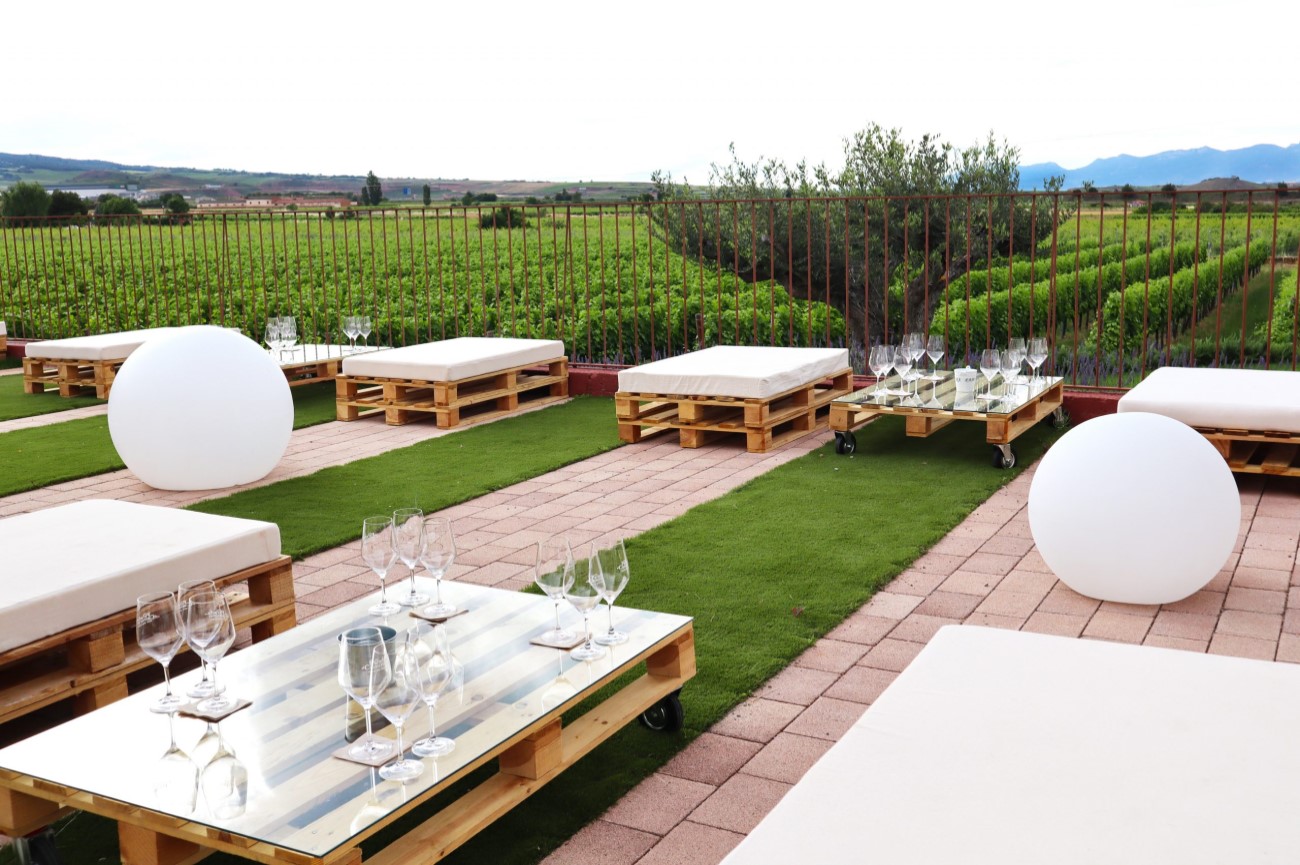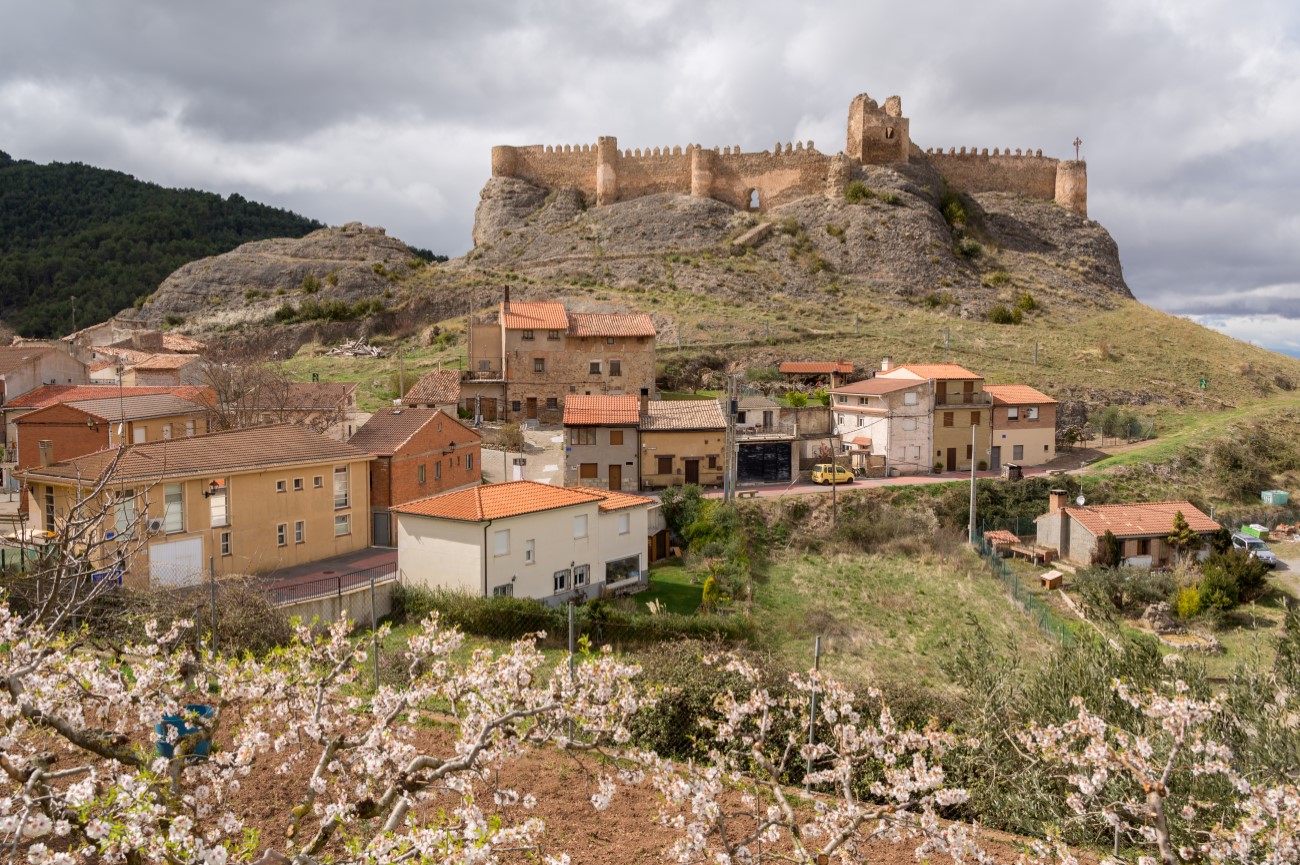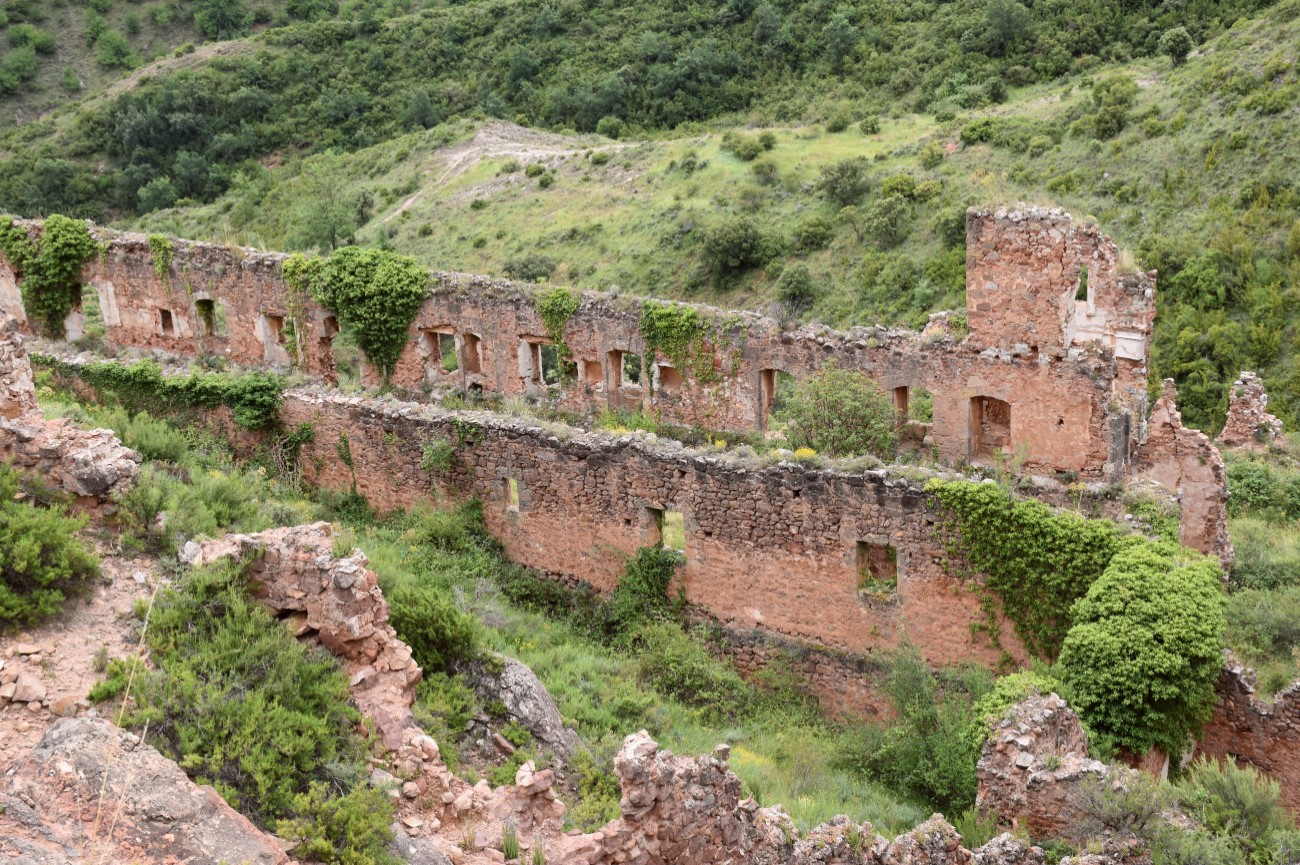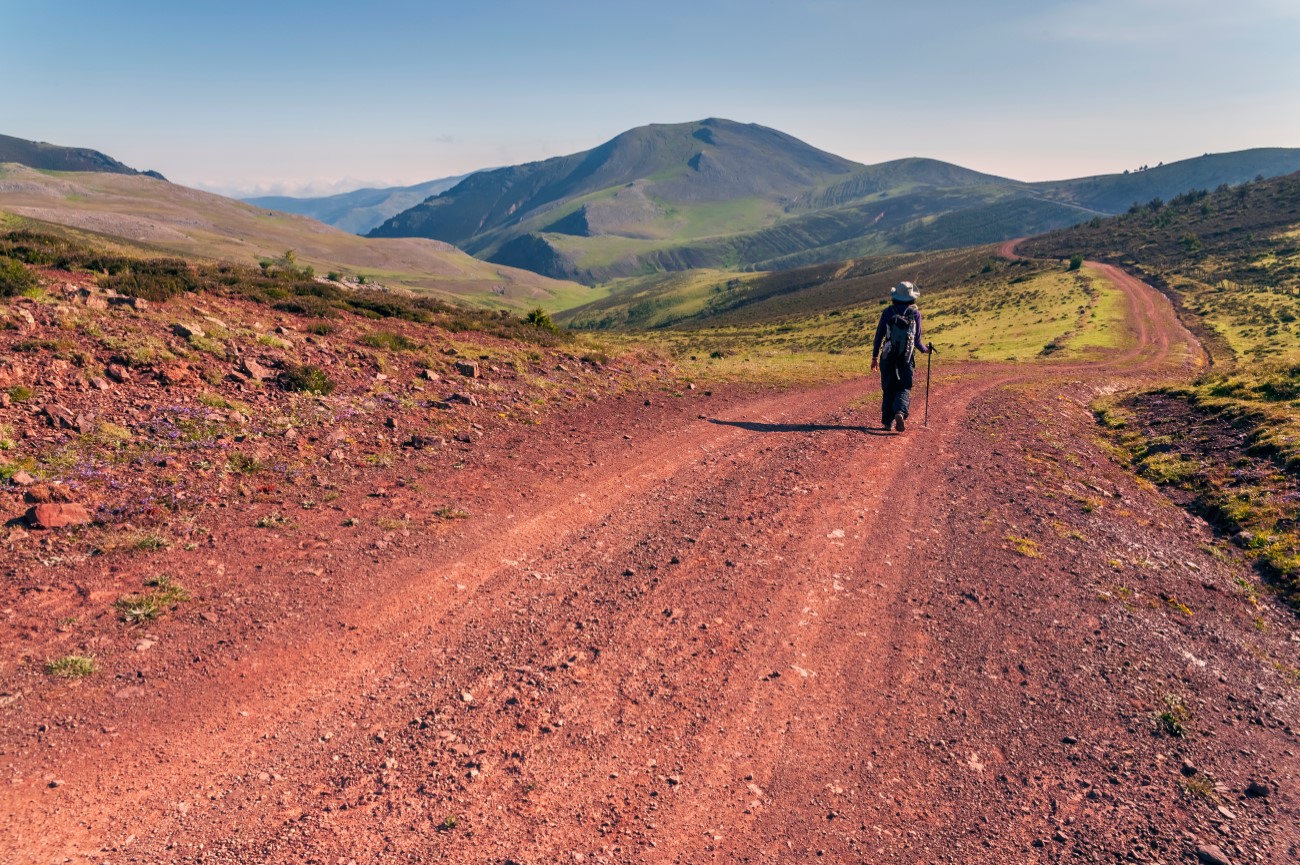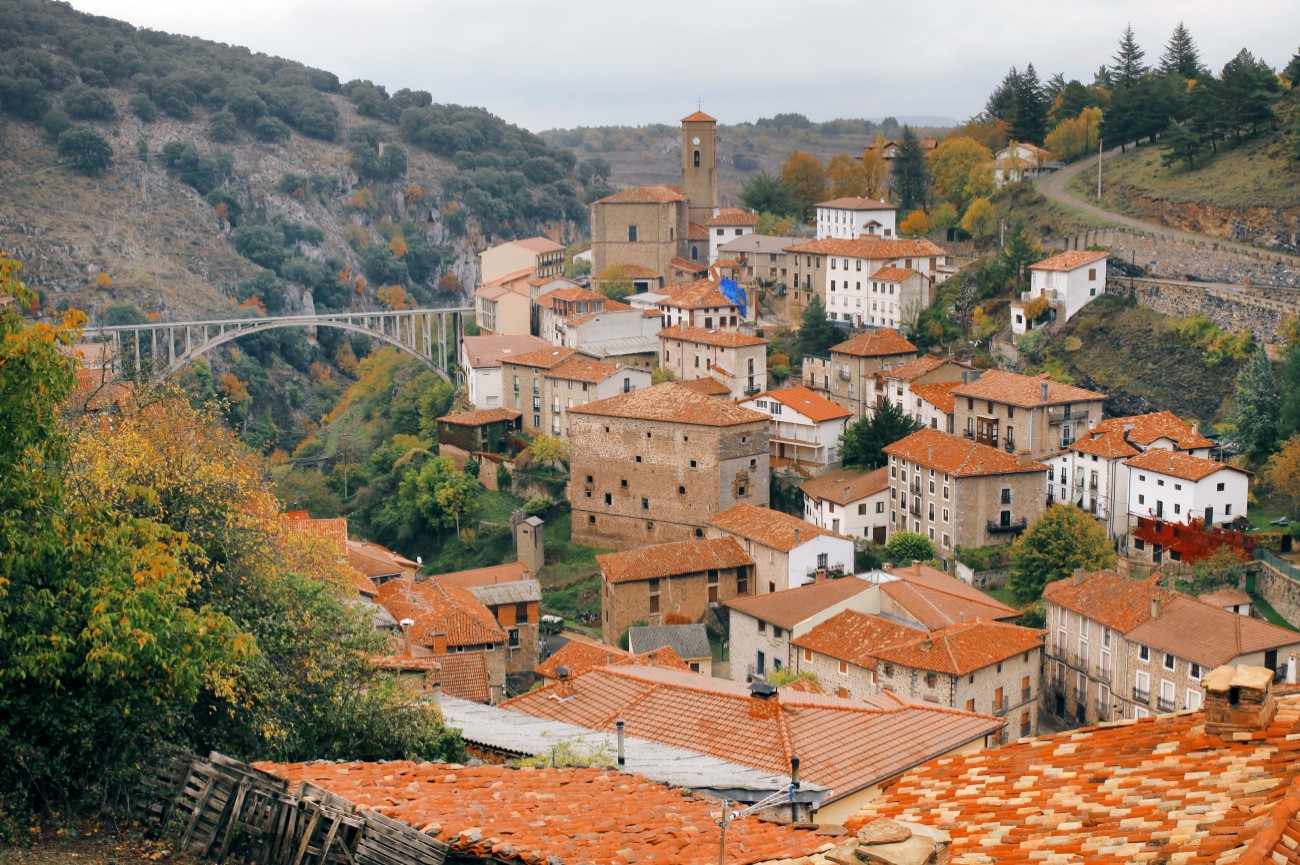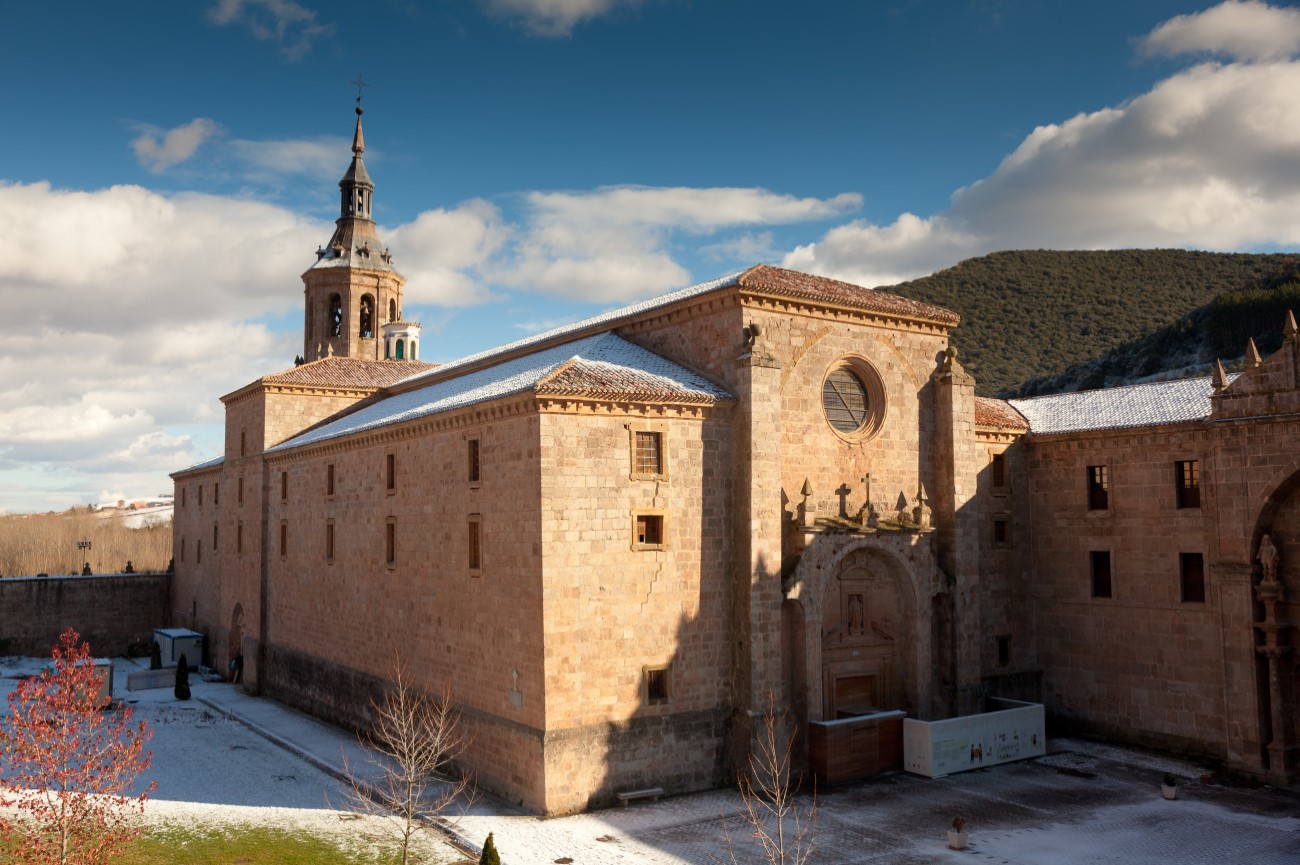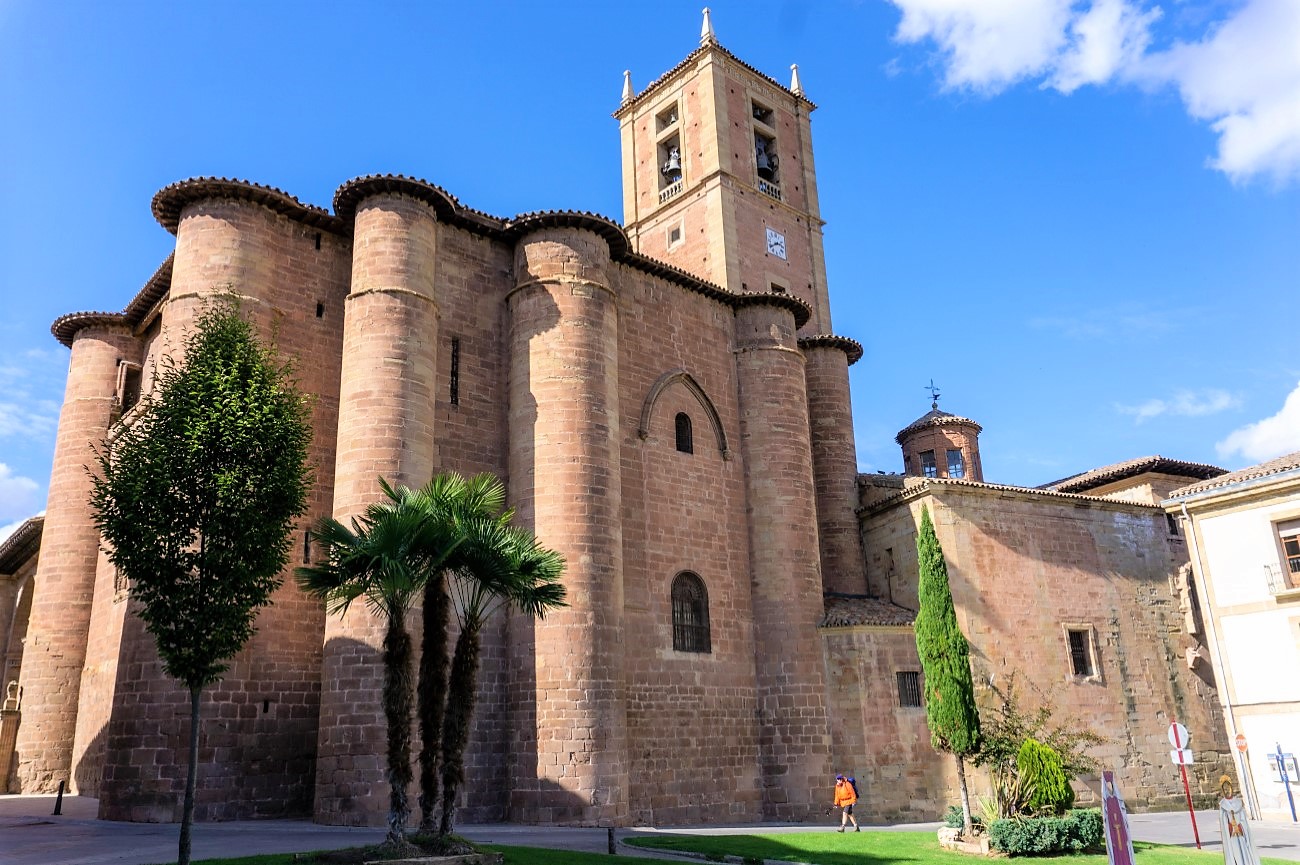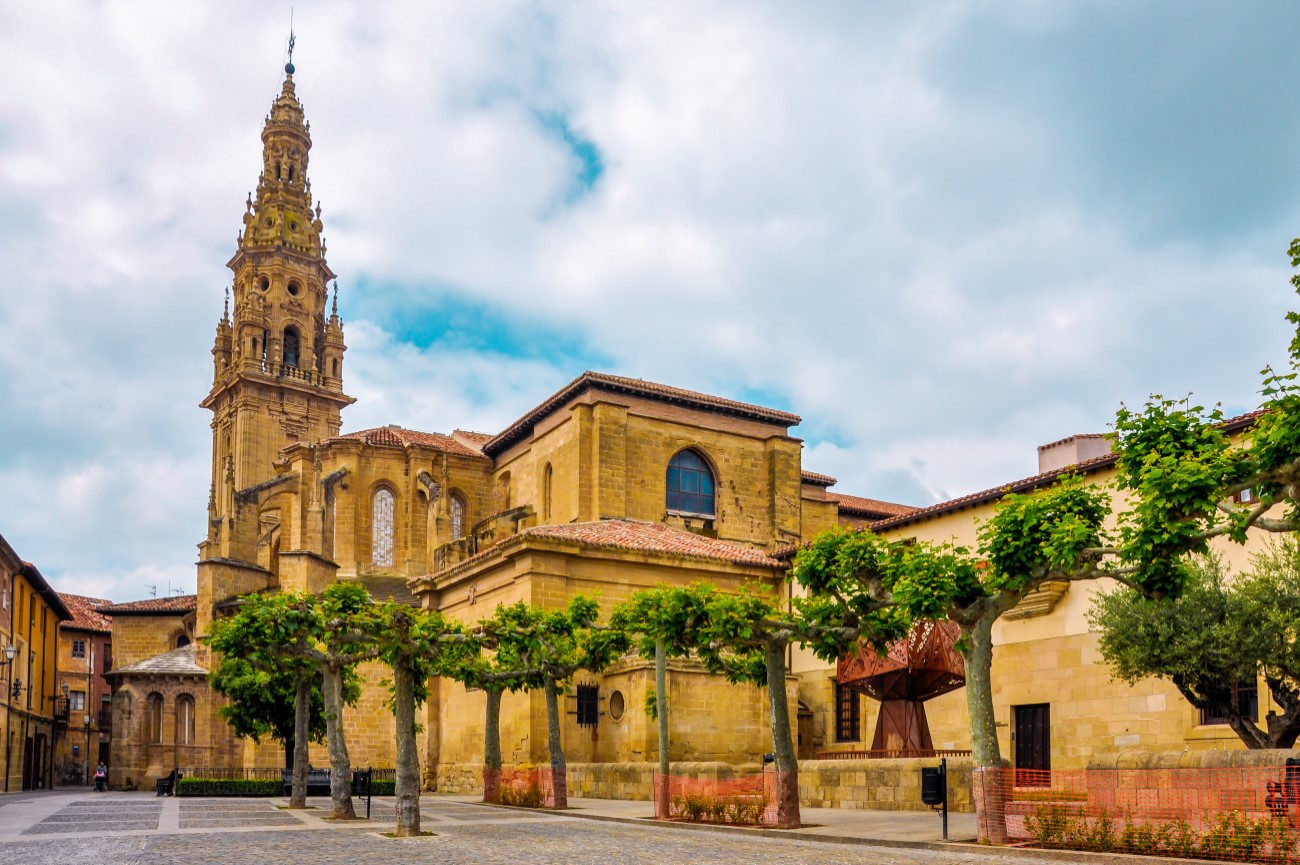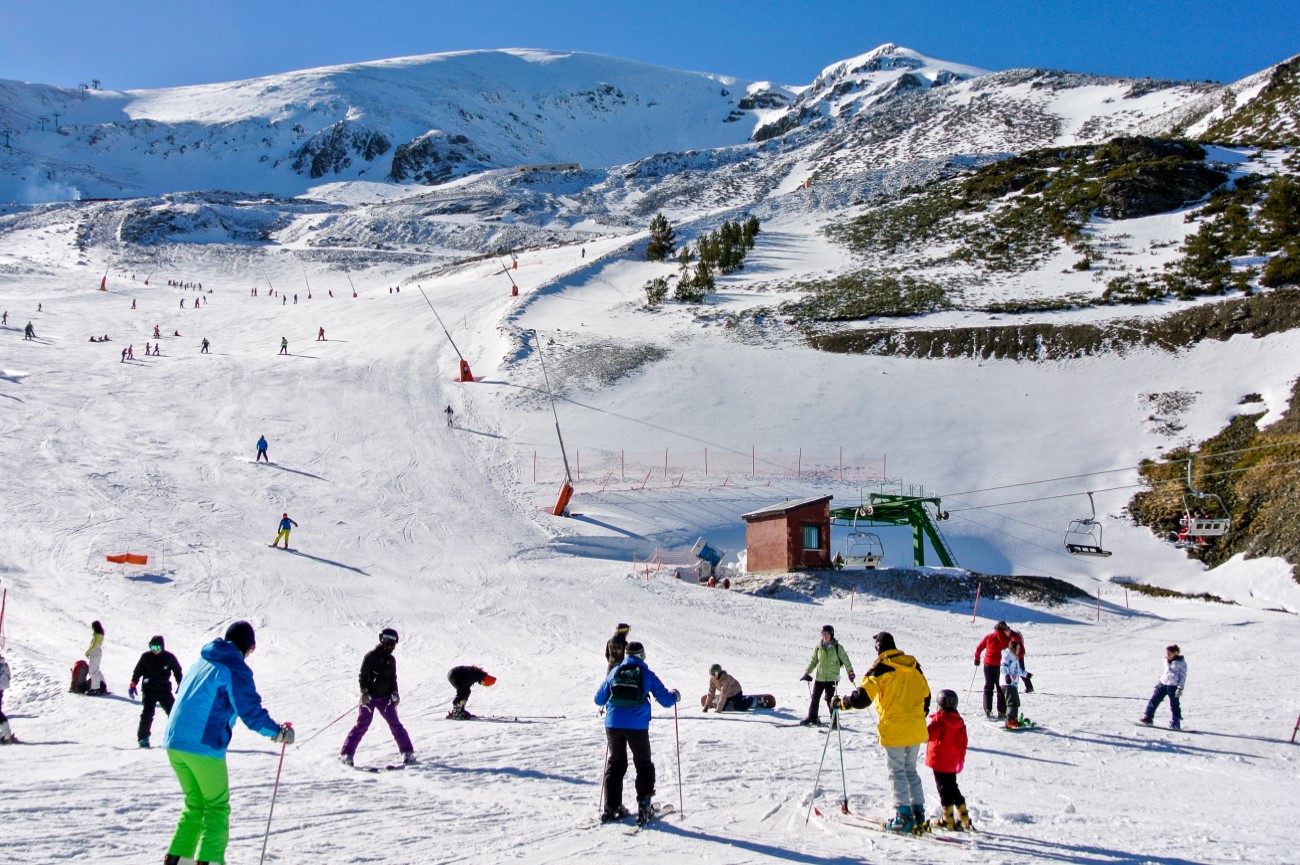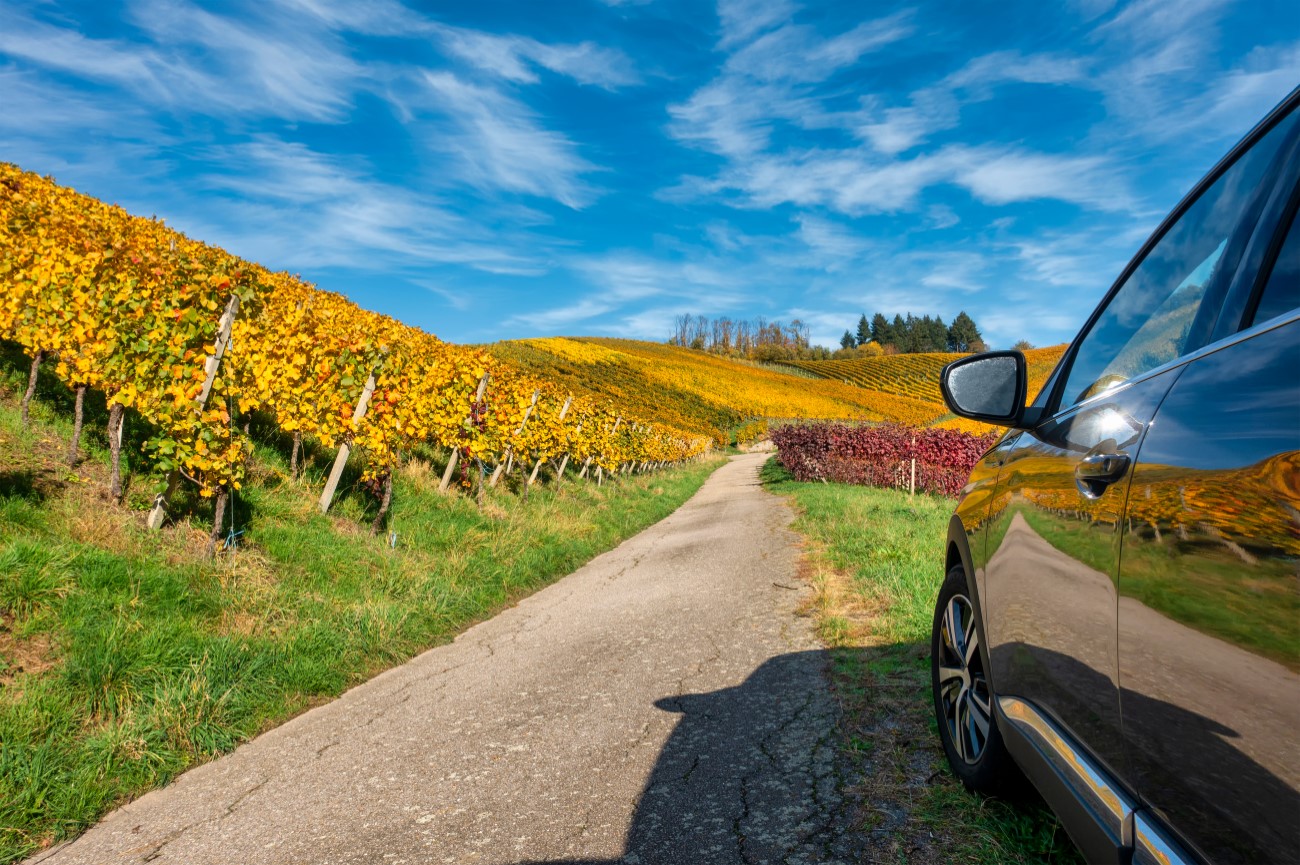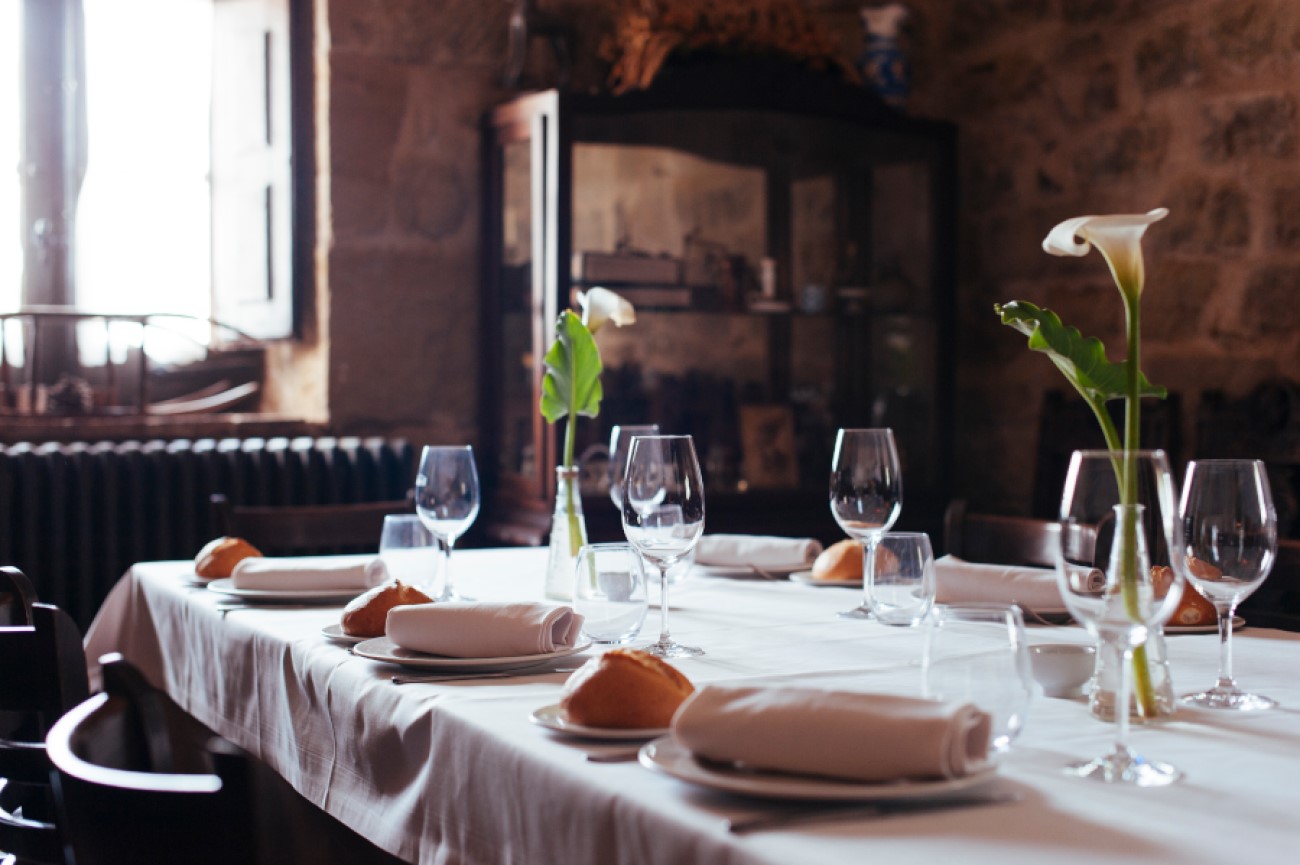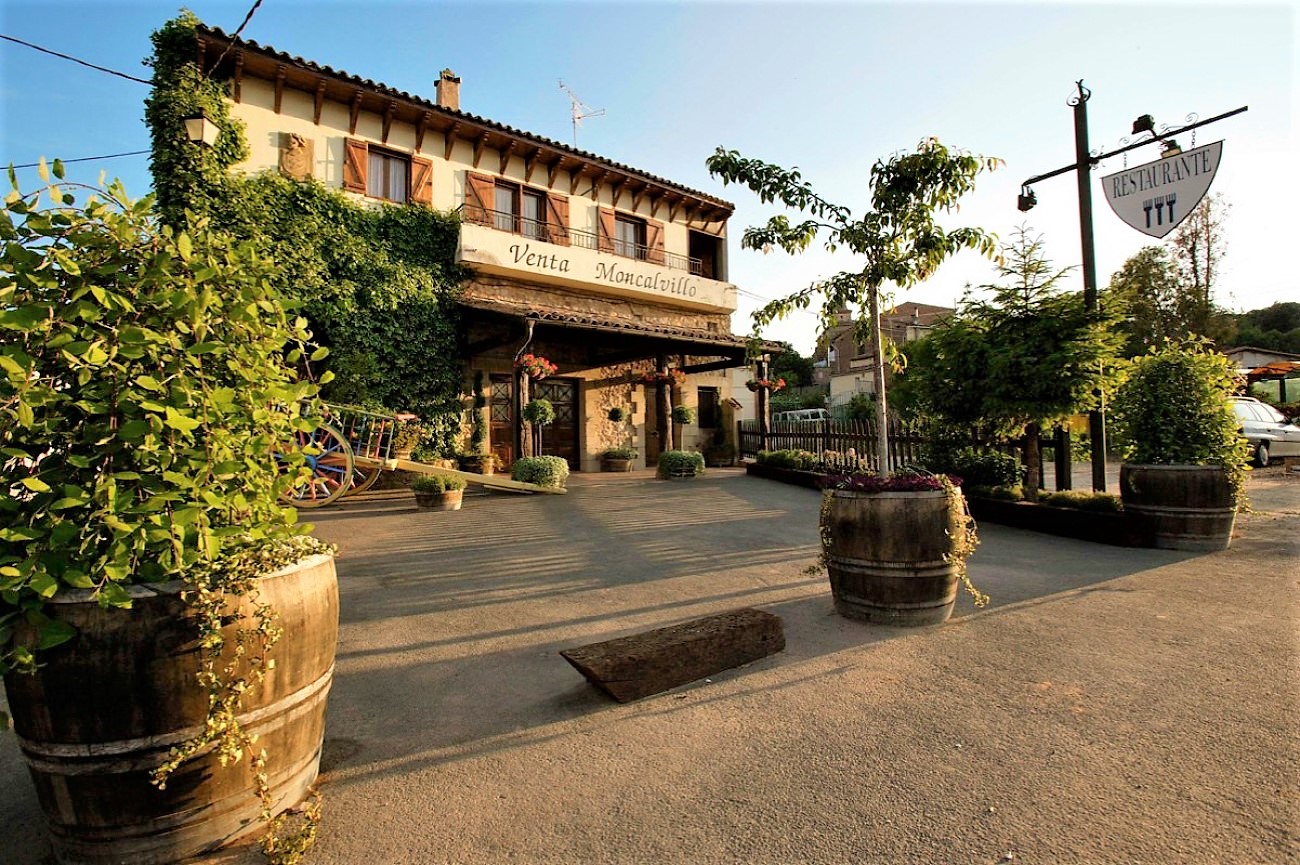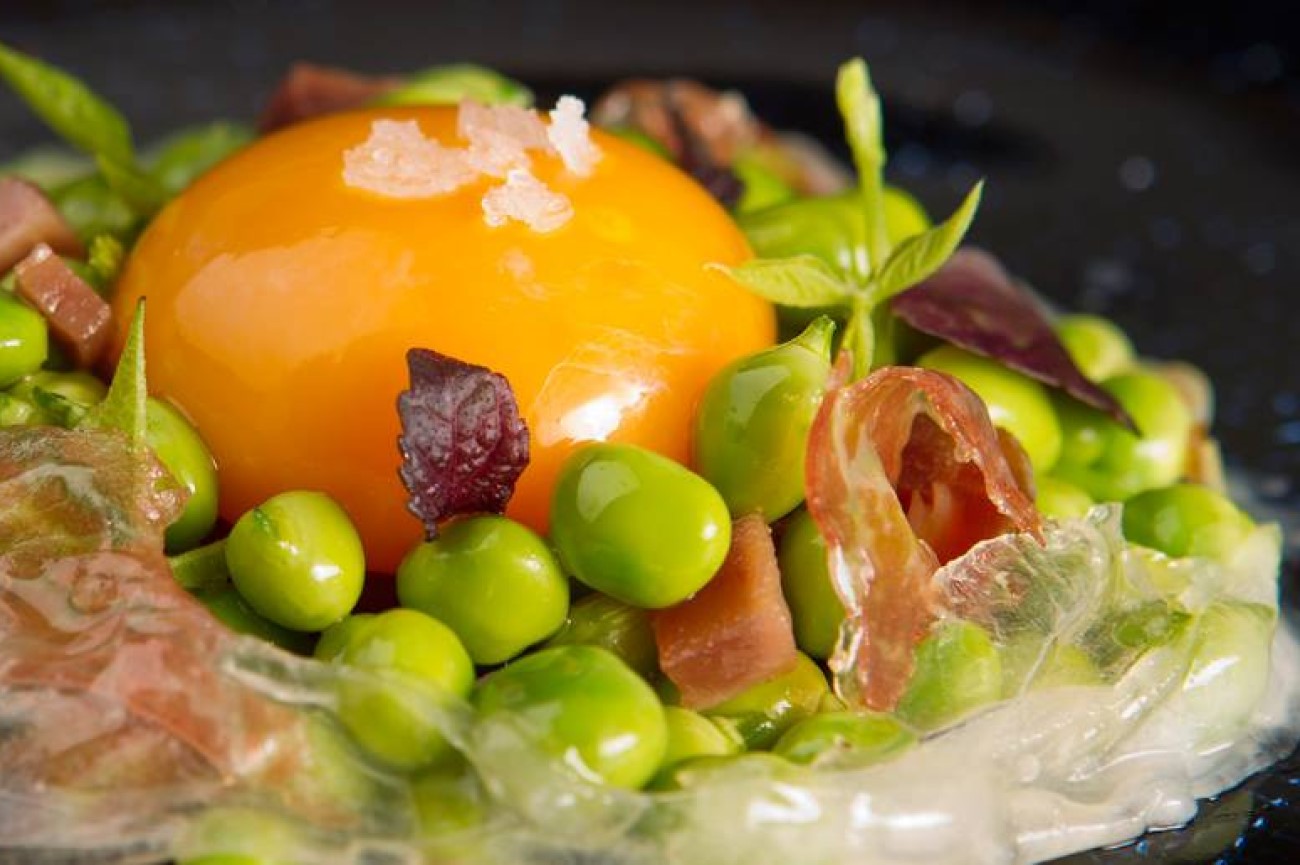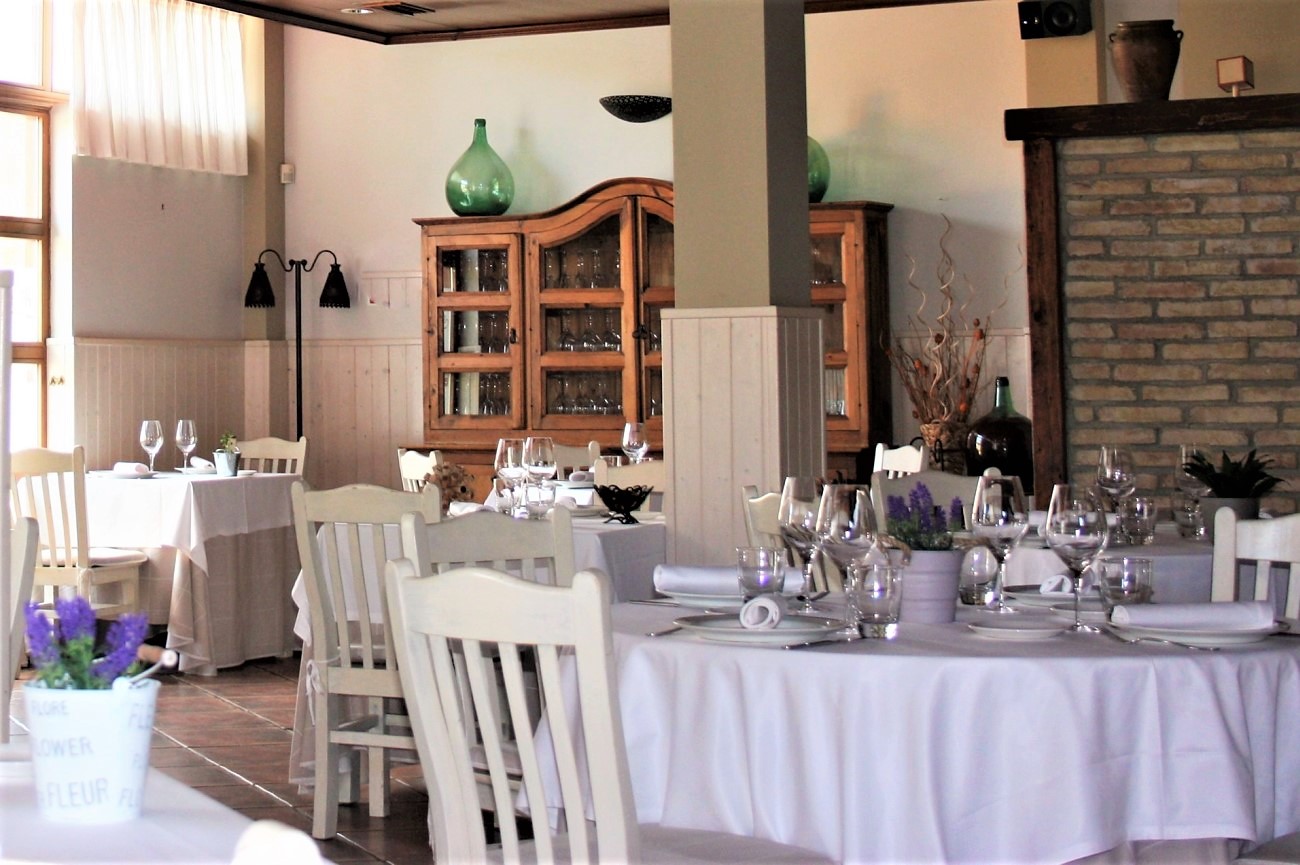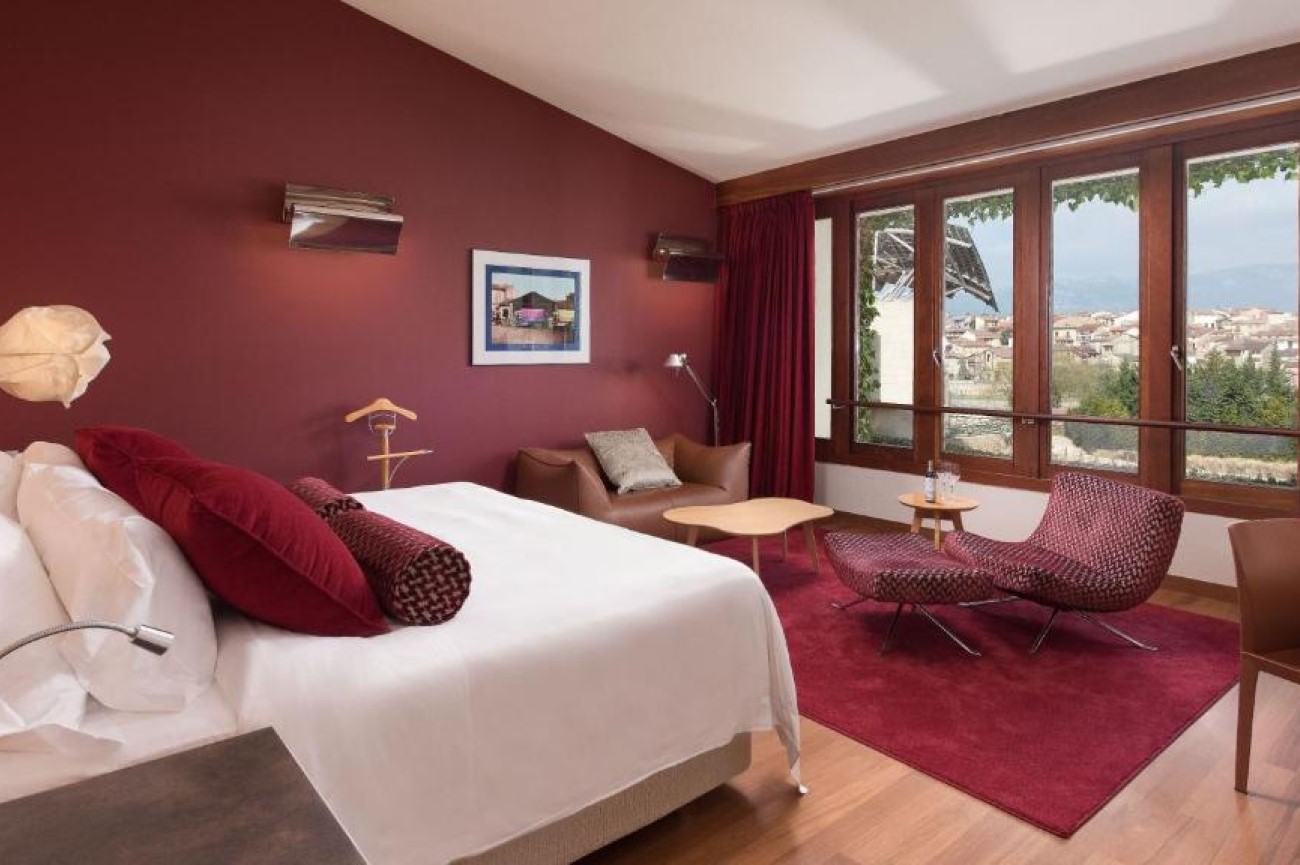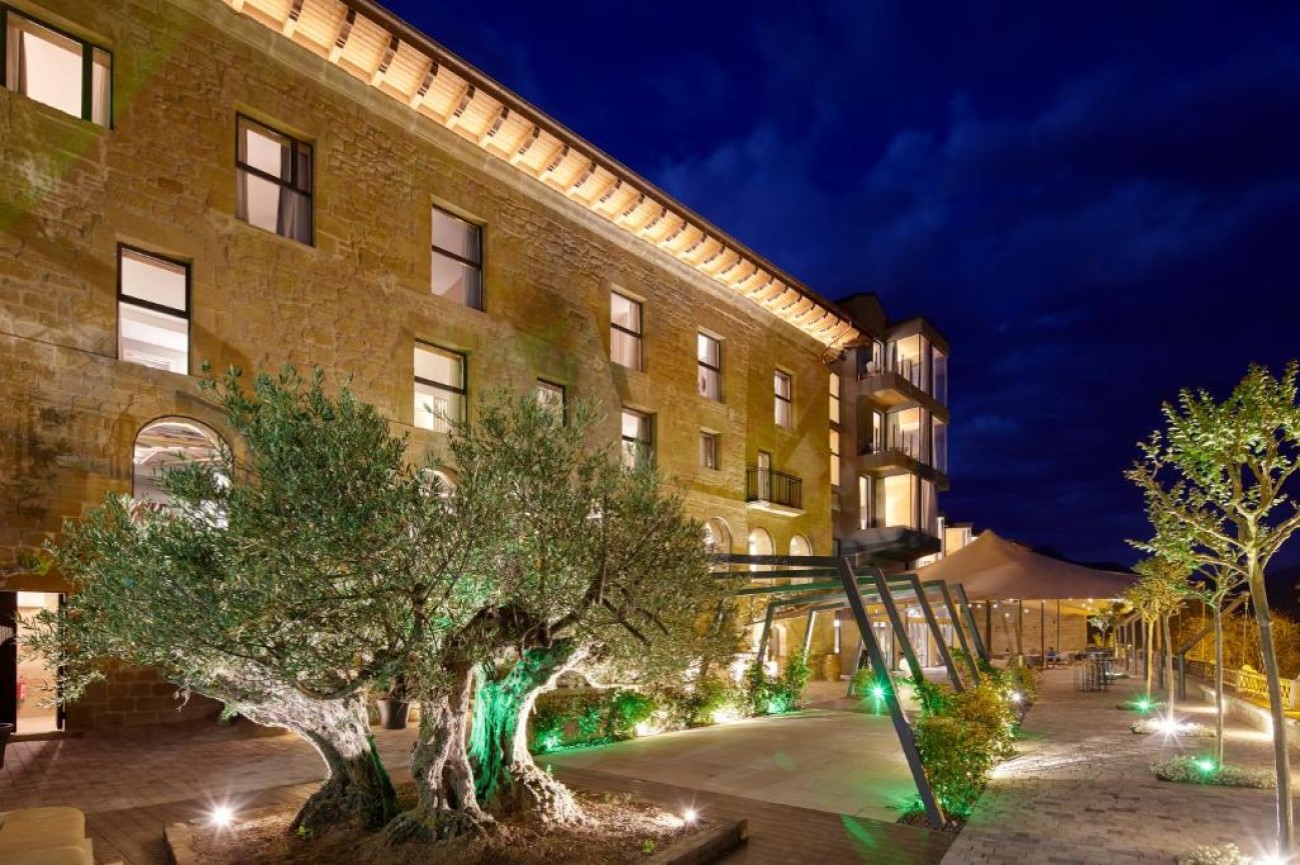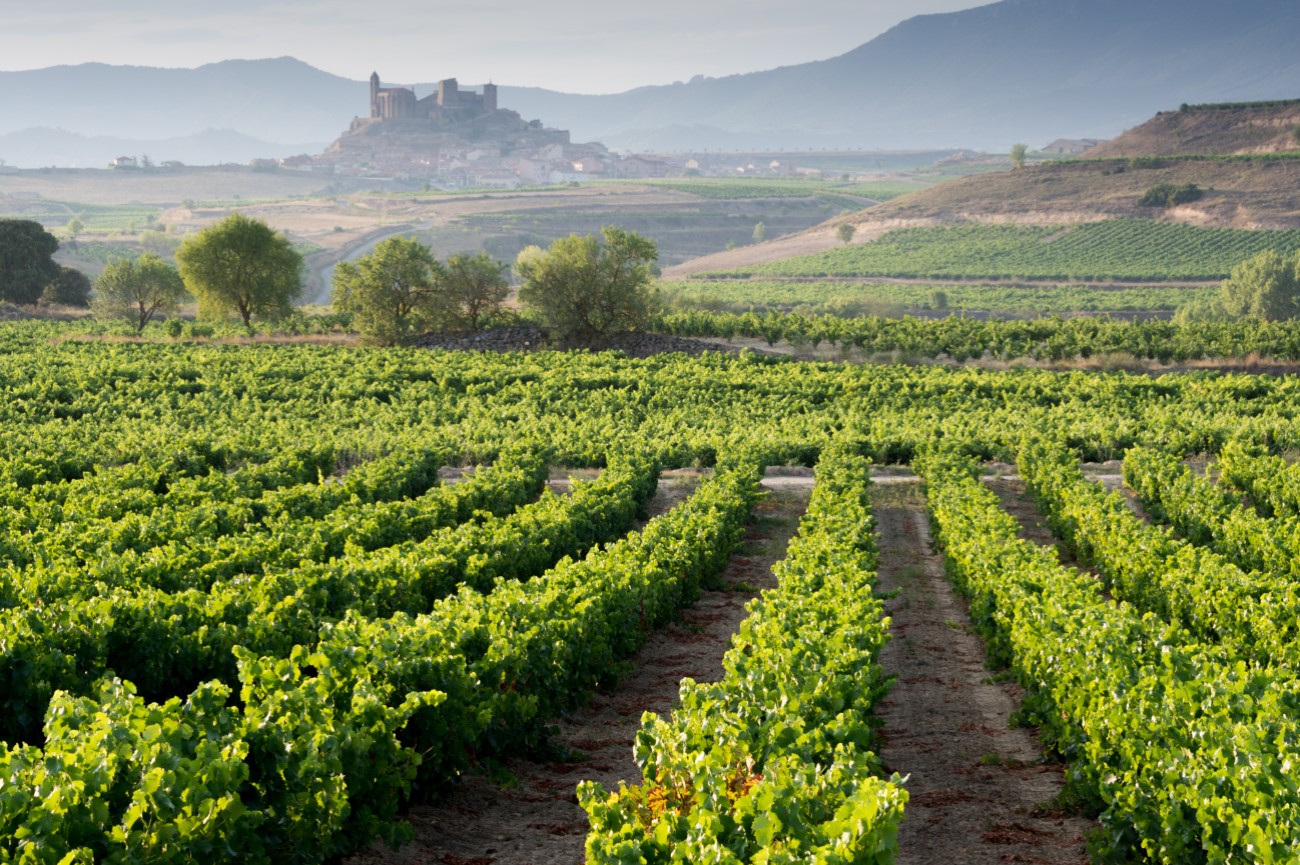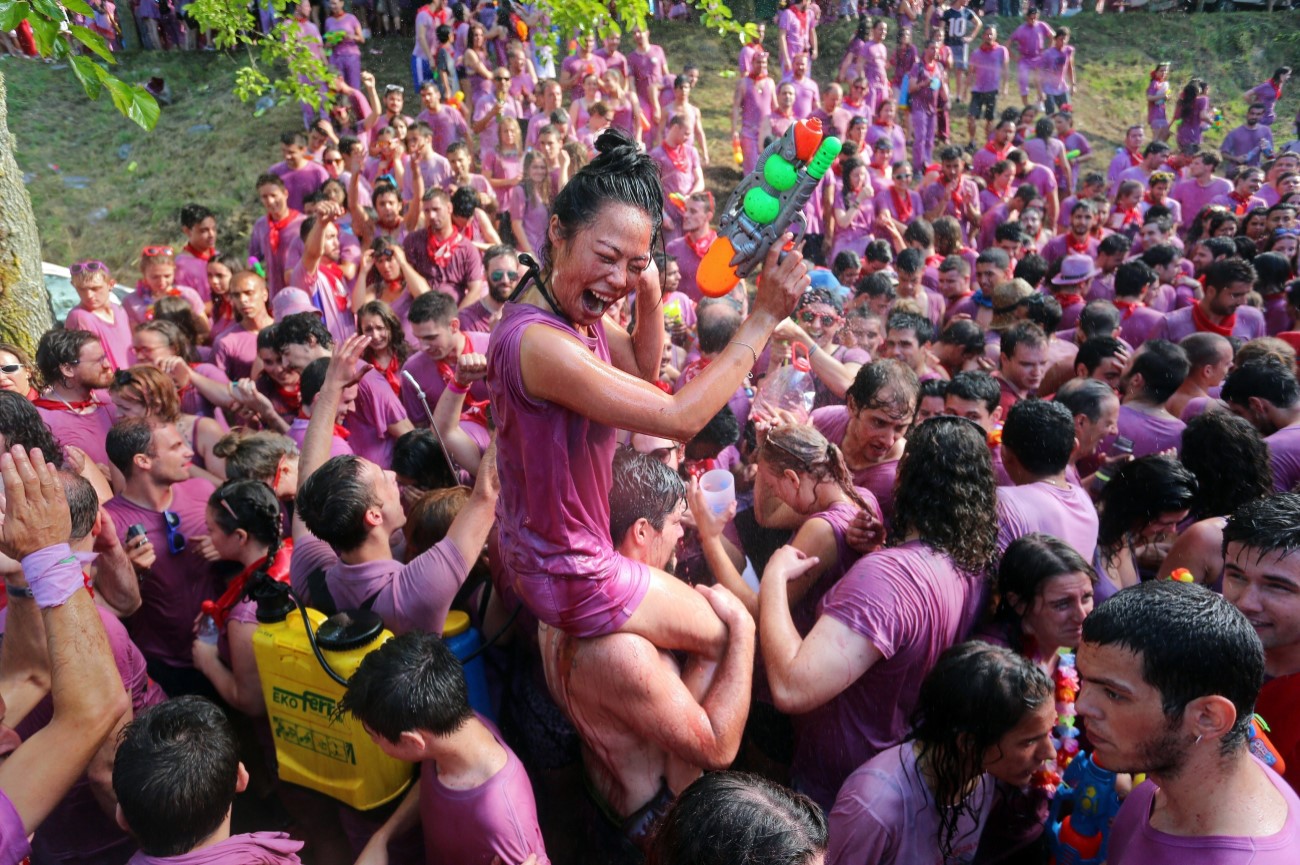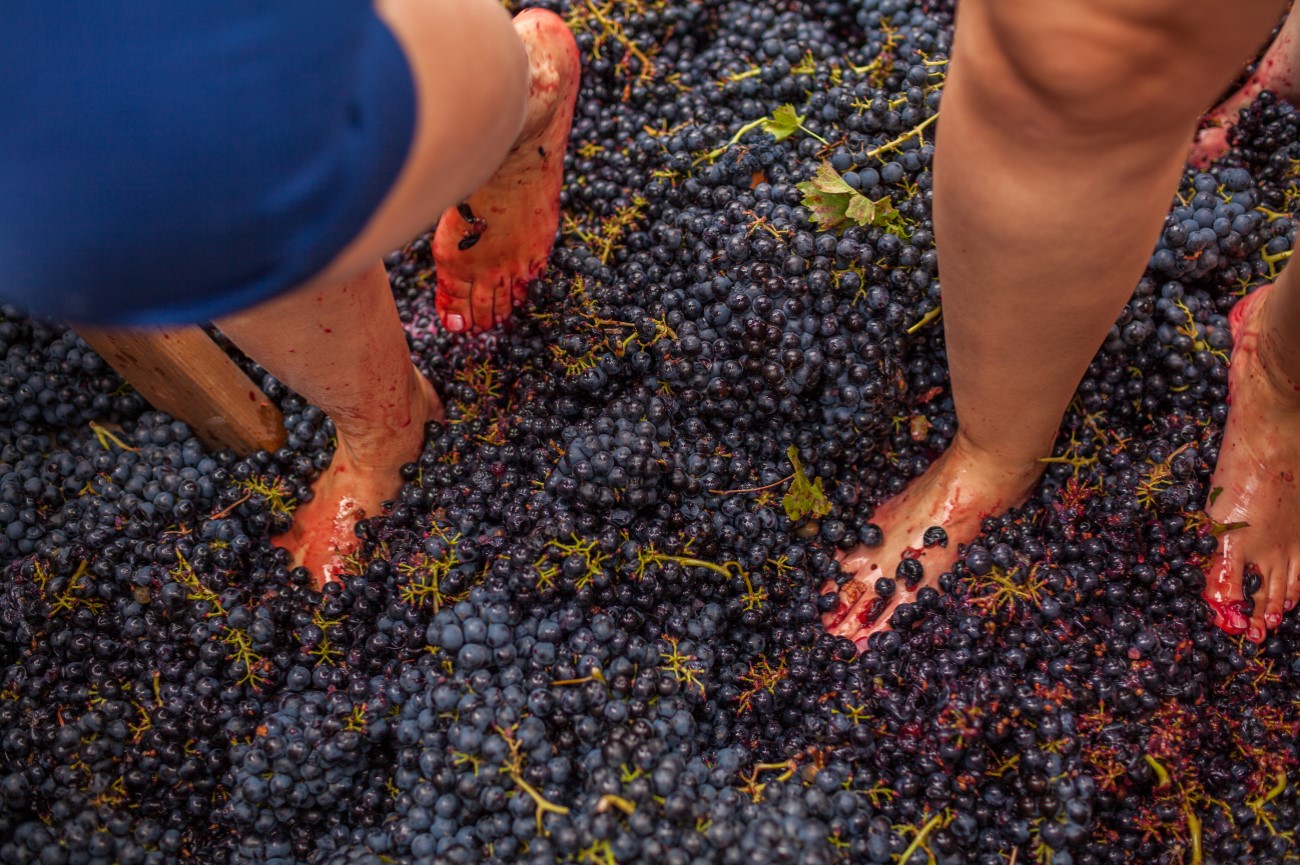La Rioja Wine Route Guide
In the North of Spain, there’s a small region called La Rioja. The Rioja wine is produced here, but the denomination of origin is much wider, with more than 500 wineries spread across the Basque Country and Navarre.
It’s one of the most famous wine regions in Spain, alongside Jerez. The wines are mostly red, made with berry-scented grapes such as Garnacha and Tempranillo and the vineyards run along the margins of the Ebro River, stretching for around 100 kilometres.
You could spend days visiting cellars and tasting wines, but there are also many cultural landmarks that deserve a visit. This guide covers everything you need to know about the Rioja wine, from its history to the different styles. It also features a five-day itinerary so you can make the most of your trip to this region.
Rioja Region History
Winemaking has been a traditional activity in Rioja since Roman times. The practice slowed down during the Moorish occupation in the 8th century, but it was kept alive by the local monasteries. Like most European countries, Spanish wineries also suffered from the phylloxera plague, and Rioja was no exception. Still, it managed to recover and in 1933 it was the first Spanish region to earn the DO status, later upgraded to the top-level DOCa (Denominación de Origen Calificada) which remains today. Despite its long heritage, Rioja producers have managed to reinvent themselves and adapt to the modern consumers.
Rioja Wine Region
In the North of Spain, about two hours away from Bilbao is the Rioja valley. This wine region has more than 65,000 hectares of vineyards and is divided into three zones: Rioja Alta, Rioja Alavesa and Rioja Oriental. Each of these offer a different terroir and microclimates, resulting in different wine traits. Temperatures are cooler in Rioja Alta with vineyards standing 300m higher than Rioja Baja. This gives the wines a higher tannin and acidity. Rioja Alavesa has similar characteristics, while Rioja Baja has vineyards on flatlands along the river, producing more fruity wines that are meant to drink straight away.
Rioja Wine Styles and Ageing Categories
Rioja wines are mostly red and use berry-scented grapes. Tempranillo is an indigenous grape, but the region also grows Graciano, Garnacha and Mazuelo. Some wineries, such as Marqués de Riscal also add small quantities of Cabernet Sauvignon. White grapes are not as widely planted, but there are white Rioja wines too, as well as rosés and sparkling wines, known as espumosos. When it comes to ageing, there are five kinds of Rioja wine: Rioja, Crianza, Reserva, Gran Reserva and Gran Añada. Below is a brief explanation of each style.
- Rioja: Once known as Vin Joven, or young wine, wines labelled as Rioja are usually in their first or second year. As a young wine, Rioja keeps its freshness and fruitiness, as opposed to the oak flavours of older wines. It often uses the Tempranillo grape as a base, but there are also exceptional white wines (Rioja Blanco) made with the Viura grape.
- Crianza: Wines labelled as Crianza have to age for a minimum of one year in casks, followed by a few months in a bottle. For white wines it’s a little bit less, with a minimum cask ageing of six months. When it comes to price, this is one of the most accessible wines, with many available for less than €15. The wine is usually aged in used oak, so the flavours aren’t as strong, but it still has quite a bit of body thanks to the natural high tannin of Tempranillo, as well as a subtle spice.
- Reserva: The Reserva red wines are aged for a minimum of three years, with at least one year in casks. White wines can come out earlier, with a minimum ageing period of two years, including six months in casks. These are only guidelines, as winemakers tend to age their wines longer than the minimum. In terms of flavour, Reserva wine is somewhere in the middle of the fruity Crianza and the oaky-infused Gran Reserva. This category also includes sparkling wines, which are aged “en tirage” (on the lees) for at least 24 months.
- Gran Reserva: The Gran Reserva wine is the one that needs more time to age. Red wines spend at least two years in oak casks, plus three years in a bottle, while white wines have a minimum ageing period of four years, with at least one year in casks. This ageing process gives the wine a deep tannin flavour. Winemakers select the best grapes for a Gran Reserva and age them for as long as needed. You’ll often find releases of around 10 years old, but you can age them in your cellar for up to 30 years.
- Gran Añada: Gran Añada is a recent category, introduced for quality sparkling wines made in Rioja (Espumoso de Calidad Rioja). These must be aged “en tirage” for at least 36 months and vintage-dated espumosos have to be hand-harvested. The production and ageing requirements are similar to a vintage Champagne.
Best Rioja Wineries
One of the best ways to sample Rioja wine is by visiting a local cellar. There are more than 500 wineries scattered across the region, many of which offer guided tours and tastings. The tours can last between an hour to two hours and should be booked in advance. Below are some of the best Rioja wineries:
- Bodegas Ysios: Amid the Rioja Alavesa region, the Bodegas Ysios stands out with its iconic wavy building designed by Santiago Calatavra. The building has become a symbol of the region and is the perfect place for a photo opportunity with the Cantabrian Mountains in the background. Tours last for about 1h30 and include a visit to the vineyards and the barrel room as well as a tasting.
- Bodegas Marqués de Riscal: Also in Rioja Alavesa is the Bodegas Marqués de Riscal. Founded in 1858 it has since expanded itself to meet production needs. Most people come here to see the striking hotel attached to the winery designed by Canadian architect Frank Gehry, the same one who designed Guggenheim in Bilbao. Visits are available from Monday to Sunday in several languages and include a tasting with sausage and chorizo from Rioja.
- Bodegas Marqués de Murrieta: This is one of the oldest wineries in Rioja, dating back to 1852. The original owner, Luciano Murrieta, was one of the first people to export Rioja wine, helping it gain its international status. The winery provides several experiences, including wine pairings with a tasting menu curated by the house chef.
- Bodegas Muga: In the town of Haro, you’ll find Bodegas Muga. Founded in 1932, this family-owned winery still uses many of its original production methods. They even make their own oak barrels for full control of the process. Visitors can choose between a range of experiences that include wine tasting courses, guided tours and even hot-air balloon rides.
- Bodegas Conde los Andes: Conde los Andes is one of the many bodegas located in the village of Ollauri. Part of the Rioja Alta, this winery draws visitors with its incredible underground cellars, known as “Los Calados”. These are over one kilometre long and still store hundreds of bottles from legendary vintages such as 1892 or 1918. Tours last for about 2 hours and include a wine tasting in the cellars.
- Bodegas Vivanco: Set in the village of Briones, Vivanco is one of the most recent Rioja wineries. It’s the ideal place to learn about the history behind this Spanish wine, thanks to the attached Vivanco Museum. You can visit the winery and the museum together or independently. There’s also a restaurant on-site overlooking the vineyards.
La Rioja Itinerary
Besides wine tasting, La Rioja as a region also has its share of cultural and natural attractions. Haro and Logroño are good bases to visit the wineries, but it’s worth exploring further out to see other sites like the Cathedral of Santo Domingo de la Calzada or the Suso and Yuso monasteries, two UNESCO sites in the town of San Millán de la Cogolla. If you’re planning to stay a couple of days in this region, our itinerary below includes all the places you can’t miss, as well as tips on where to eat and where to stay.
Day 1

Begin your tour of La Rioja in the east with a visit to the town of Alfaro. The main attraction here is the San Miguel Collegiate Church. Dating back to the 17th and 18th centuries, this church has a Classicist façade and large Baroque altarpieces inside.
From Alfaro, drive to the
town of Arnedo, passing through the Castle of Cornago. Arnedo is the
third largest town in La Rioja, and its narrow streets are like a
medieval maze. Besides the remains of the Roquedo Castle, you can find
many beautiful churches such as the Parroquia de Santo Tomás, the
Iglesia de Santa Eulalia and the Iglesia San Cosme y San Damián.
Next stop is Calahorra. Standing on a promontory, this small town overlooks the Cidacos valley. It’s worth visiting the town’s cathedral, with its prominent façade in plateresque style. Other attractions include the neoclassical church of Santiago and the Monasterio de San José. End the day with a visit to the nearby Castillo de Aguas Mansas, a medieval castle built in ashlar stone.
Day 1 - La Rioja Tour Map
Day 2

Spend a day exploring the capital of La Rioja, Logroño. This small city is often overlooked by tourists, but it’s full of picturesque squares and historical churches. Highlights include the gothic Cathedral of Santa María de la Rodonda and the Church of San Bartolomé. It’s also a great place to sample pintxos and the ideal base to explore some of the region’s most famous wineries such as Marqués de Murrieta. You can find more about what to do in the city in our Logroño itinerary.
Day 2 - La Rioja Tour Map
Day 3

To the west of Logroño is the charming hilltop village of Laguardia. In the 10th century, it used to be enclosed by walls and you can still find traces of it as you wander through its streets today. Laguardia’s elevated position allows visitors to enjoy incredible views over the vineyards and the surrounding mountains. The best view of the town is from the Torre Abacial, a 12th-century tower that was once part of a monastery. It’s also worth checking the Iglesia de Santa María de los Reyes and the animated clock atop the town hall.
Continue driving to the
sleepy town of Eltziego. It’s here you’ll find the Marqués de Riscal
winery and its striking hotel designed by Frank Gehry.
Another prominent
building is the 16th-century church Iglesia de San Andrés, which
combines Gothic and Renaissance styles.
After Eltziego, make your way to Briones. Classified as a Cultural Heritage site, it’s one of the most beautiful villages in Spain. Wine lovers will enjoy a visit to the Dinastia Vivanco, a museum dedicated to the region’s wine history. Visitors also have access to a tasting room and a restaurant. Another attraction is the Iglesia de Nuestra Señora de la Asunción, a gothic church dating back to the 16th century.
Day 3 - La Rioja Tour Map
Day 4

Our tour of La Rioja continues in La Bastida. This tiny town was once an important military base in the Middle Ages. Today the main attraction is the Church of Nuestra Señora de la Asunción, a 16th-to-18th-century church that combines Renaissance and Baroque styles.
Next stop is the town of Haro. Alongside Logroño, this is where you’ll find many famous local wineries. Among them are the Bodegas Muga, the R. López de Heredia and the Bodegas Roda, all located near the town’s train station. Other attractions include the gothic Church of Santo Tomás.
Make a small
detour to see the 15th-century Castillo de Sajazarra and visit its
winery.
Then head south to the town of Navarrete. The town is famous for
its ceramics and pottery and is part of the Way of St.James pilgrim’s
route. A few noteworthy sites include the Iglesia Nuestra Señora de la
Asunción and the Bodegas Corral.
Finally, visit Clavijo, a small town surrounded by the Cameros Mountains. Here you can visit the remains of a Moorish castle and the ruins of the San Prudencio Monastery.
Day 4 - La Rioja Tour Map
Day 5

Before you leave La Rioja, it’s worth discovering some of its natural wonders. The Sierra de Cebollera is a stunning nature reserve with large forest areas and plenty of wildlife species, such as foxes, wild boar and deer. It’s also a great spot for birdwatching, where you can observe goshawks and eagles.
After exploring the park, head north to Ortigosa de Cameros. Occupied since prehistoric times, this small village sits on a ravine amid the Encinedo Mountain Range. Make sure to explore the town’s caves of La Paz and La Viña and visit the 16th-century church of San Martín.
Further north is the town of San Millán de la Cogolla. It’s
famous for its two monasteries: Monasterio de Suso and Monasterio de
Yuso, both of which are Unesco World Heritage sites. Nearby is the
village of Nájera, which is home to another remarkable monastery, the
Monasterio de Santa María la Real.
Our tour continues in Santo Domingo
de la Calzada with a visit to the town’s cathedral. The building is an
incredible example of Romanesque architecture in Spain with 12th-century
capitals and reliefs.
End the day exploring the town of Ezcaray. Attractions include the Church of Santa María la Mayor from the 14th century and the hiking trails around the surrounding mountains. If you visit in winter, you can also combine your trip with a visit to the Valdezcaray ski resort.
Day 5 - La Rioja Tour Map
How to Get to la Rioja
La Rioja has an airport in Logroño, but it’s mostly used for domestic flights. If you’re travelling from abroad, the best way to reach this region is through the Basque city of Bilbao. From here, it’s about an hour and a half drive south. While there are buses that travel between the small towns of La Rioja, the best way to explore the region and its vineyards is by hiring a car.
Where to Eat in la Rioja
Beyond wine, La Rioja also has a remarkable food scene. Regional dishes include hearty bean stews, roasted lamb and piquillo peppers. Its proximity to Bilbao, also influences its cuisine, with many bars offering Basque pintxos. From small taverns to Michelin-star restaurants, below are some of the best places to eat in La Rioja:
- Marqués de Riscal: Set in Eltziego, Marqués de Riscal doubles as a winery and hotel with an iconic design by Frank Gehry. It’s also home to a Michelin-starred restaurant run by chef Francis Paniego. The two tasting menus focus on traditional local cuisine with a contemporary touch. To pair with the meals, there’s a selection of Riscal wines, produced just around the corner.
- La Vieja Bodega: In the small village of Casalarreina, about 6km from Haro, you’ll find La Vieja Bodega. Housed in an old winery, this cosy restaurant has a rustic decor with exposed stone walls and wooden ceilings. It serves traditional Riojan dishes, such as baked hake and oxtail stew.
- Venta Moncalvillo: Brothers Carlos and Ignacio Echapresto run this Michelin-starred restaurant in the village of Daroca de Rioja. Ignacio curates the seasonal menu, while Carlos is an award-winning sommelier. Using regional products, the brothers create exquisite dishes such as lamb loin and smoked tongue.
- La Cocina de Ramón: If you’re visiting Logroño, stop by La Cocina de Ramón. This modern restaurant is located close to the city’s market where it sources most of its ingredients. Specialities include slow-roasted pork and wild turbot. There’s also a good vegetarian section.
- Héctor Oribe: Named after its chef, Héctor Oribe is another Michelin-starred restaurant worth trying in La Rioja. You’ll find it in the small town of Páganos, on the outskirts of Laguardia. Compared to the other options, the tasting menu here is pretty affordable at around €41. The restaurant is only open for lunch and only has a few tables, so it’s worth booking in advance.
Where to Stay In la Rioja
- Hotel Marqués de Riscal (5 stars): When talking about places to stay in La Rioja, you can’t help mentioning the Hotel Marqués de Riscal. The striking wavy building designed by Frank Gehry has made it one of the top attractions in the region. Guests can enjoy the proximity to the Riscal vineyards, as well as access to a spa and a Michelin-star restaurant.
- Hotel Calle Mayor (4 stars): This four-star hotel is the ideal place to stay if you want to base yourself in Logroño. Housed in a former palace, it offers 12 rooms with a contemporary and colourful decor. Guests can also access a gym and a reading room. While there’s no restaurant on-site, the hotel is conveniently located near the Calle Laurel, where you’ll find most of the city’s tapas bars.
- Palacio Tondón (4 stars): Set by the margins of the River Ebro in the town of Briñas, this luxurious hotel offers incredible views of the Tondón vineyards. It occupies a 16th-century palace with many of its original features still visible. Facilities include a wine bar, a terrace and a modern restaurant with a menu focused on local and seasonal ingredients.
Best Time to Visit la Rioja
La Rioja is beautiful all-year-round, but to make the most of the region it’s best to visit during spring or autumn. The weather is moderate during these two seasons, and there’s little to no rain. In the summer the temperatures get quite hot, and some wineries and restaurants often close for their holidays. The same thing usually happens around Christmas and Easter. If you want to join the wine celebrations, there are at least two festivals that you can’t miss: the Haro Wine Festival in June and the Rioja Wine Harvest Festival in late September. In the winter, you might catch some snow over the Cantabrian mountains.
La Rioja Festivals
- Haro Wine Festival: On June 29th, thousands of people gather around Haro for the annual wine battle. The celebrations take place near the Hermitage of San Felices with locals dressing up in white and throwing red wine at each other.
- Rioja Wine Harvest Festival: In late September, Logroño hosts the Rioja Wine Harvest Festival. Also known as the festivities of San Mateo, this lively event marks the grape harvest season and lasts for about a week. Celebrations include the traditional grape stomping and the offering of the first must to the Virgen de Valvanera.


